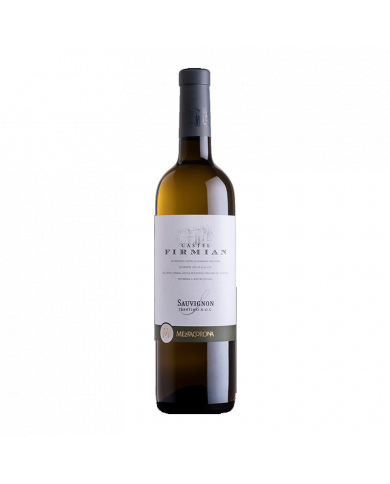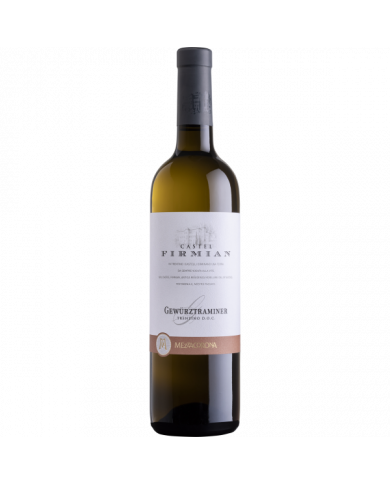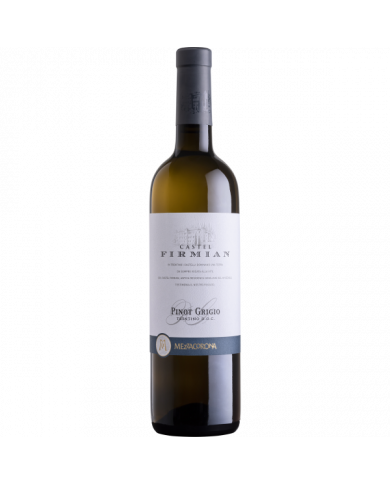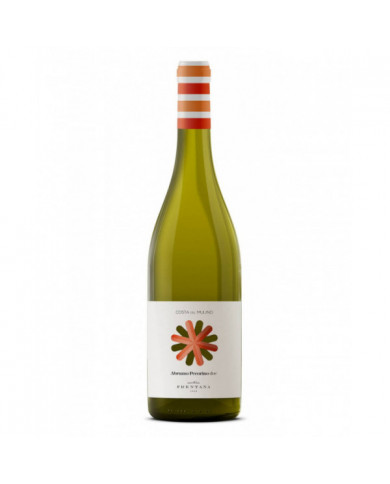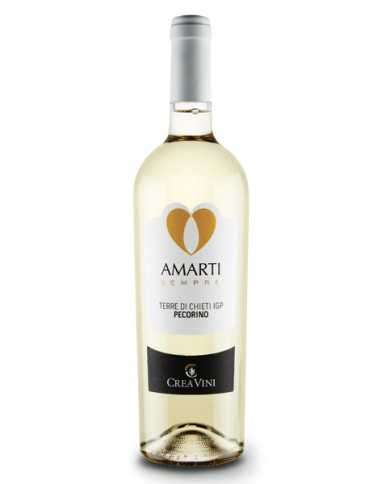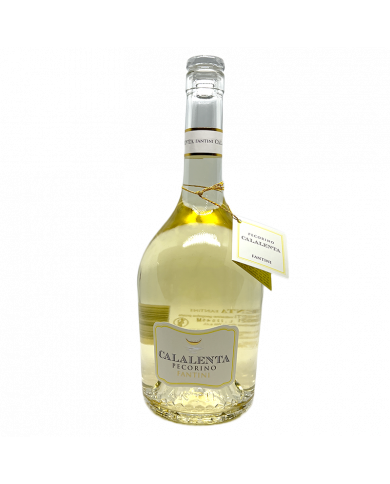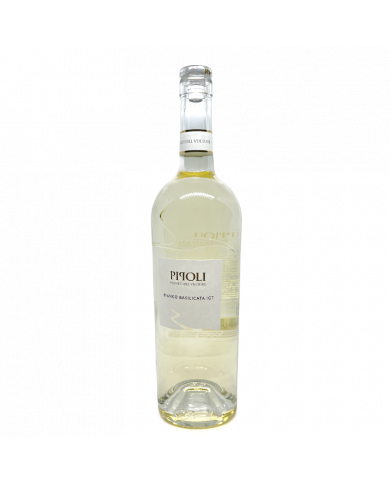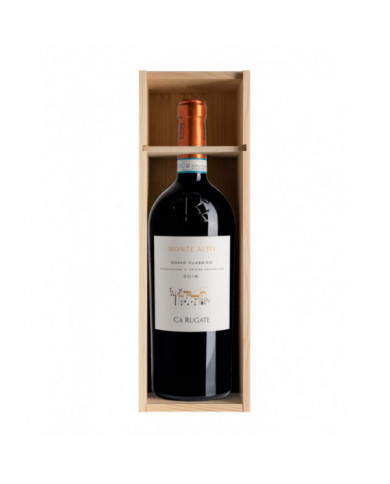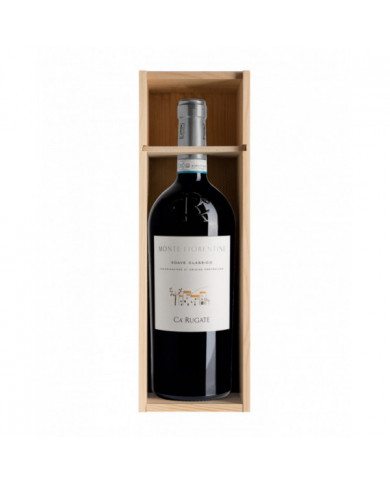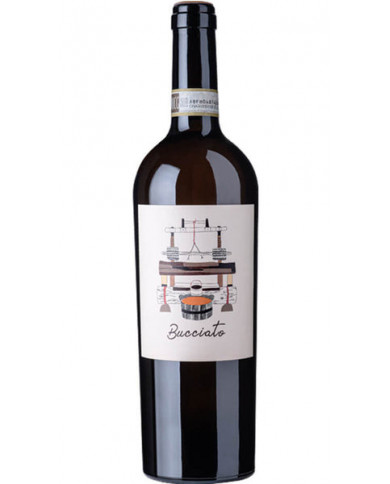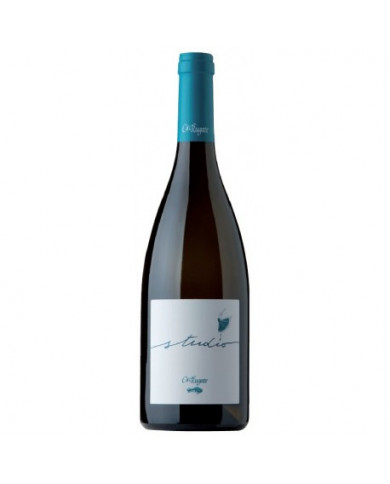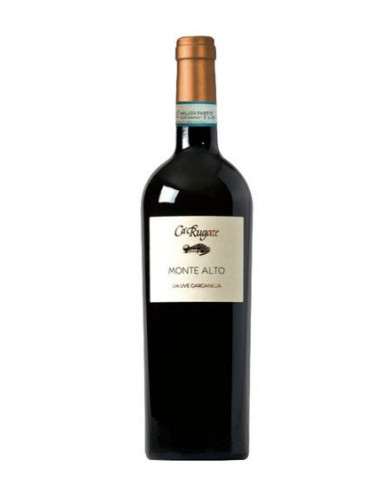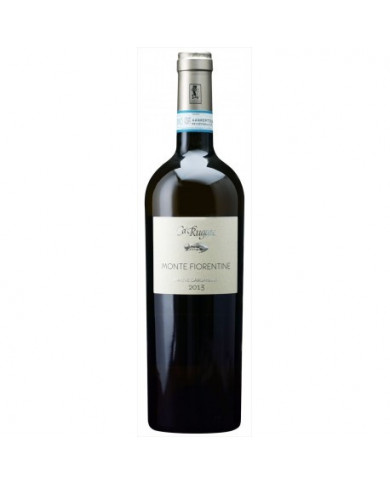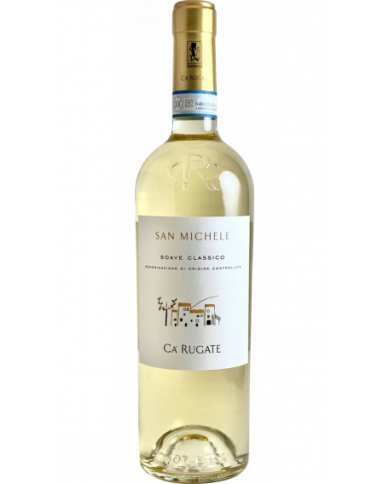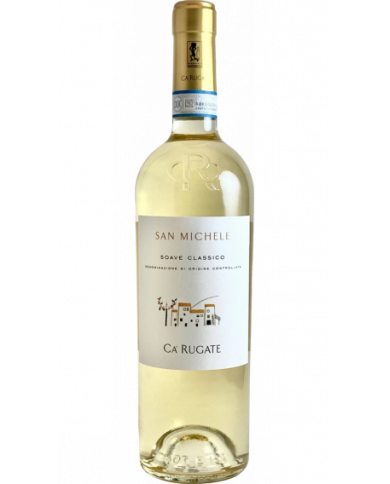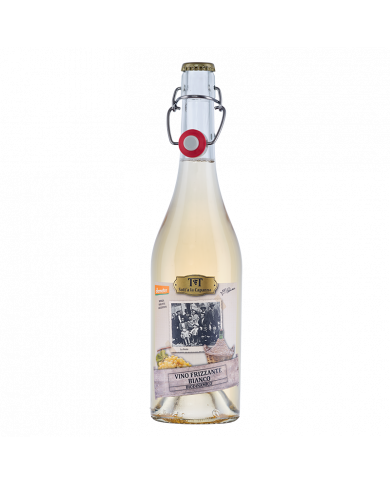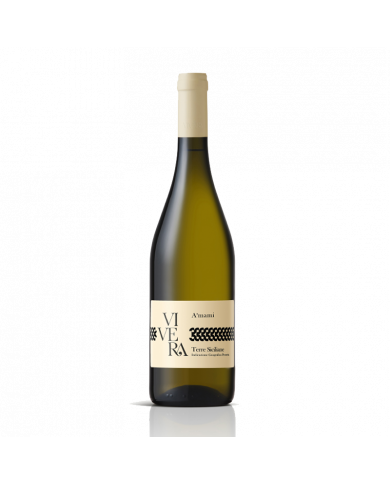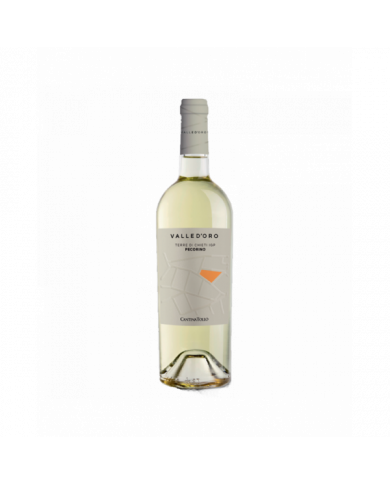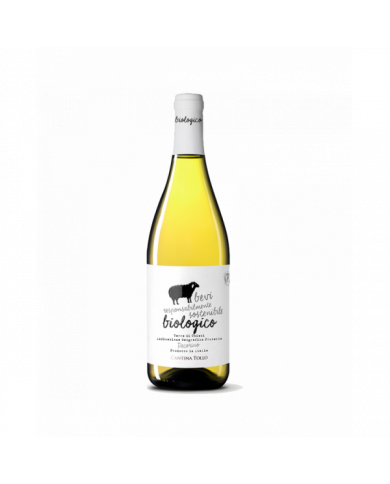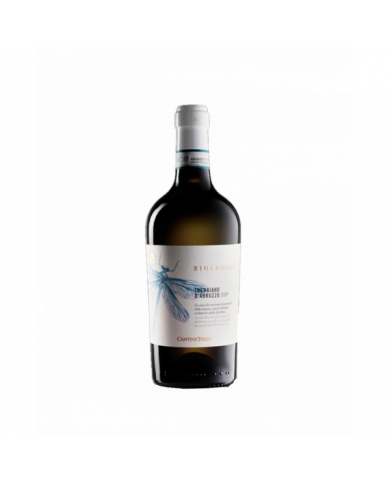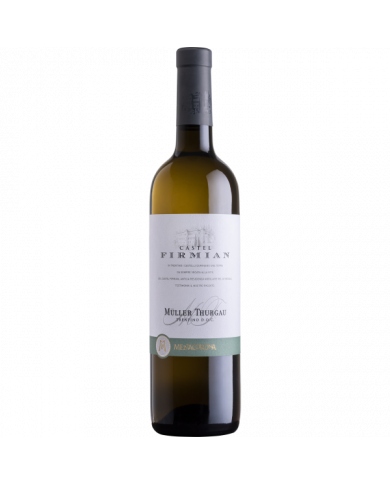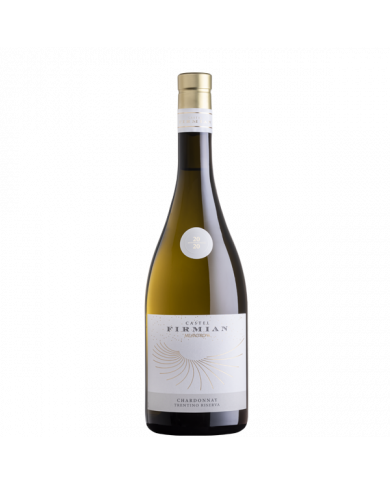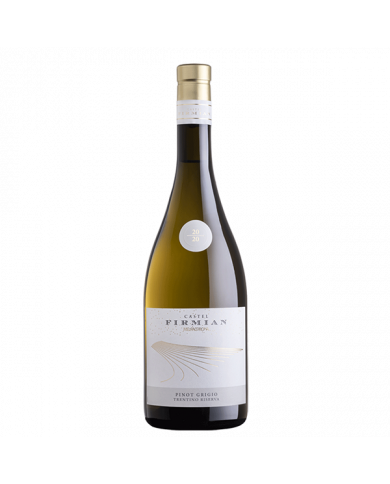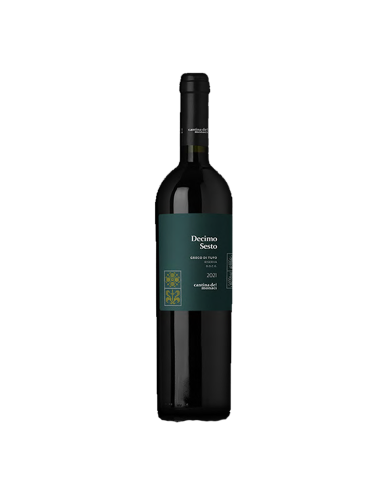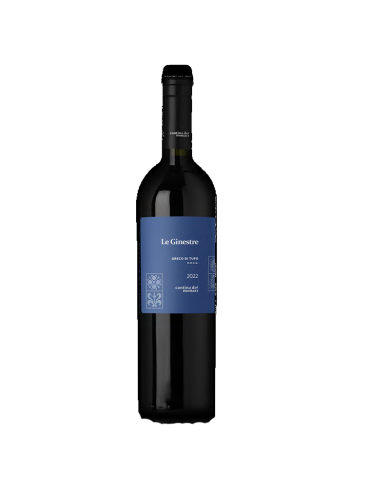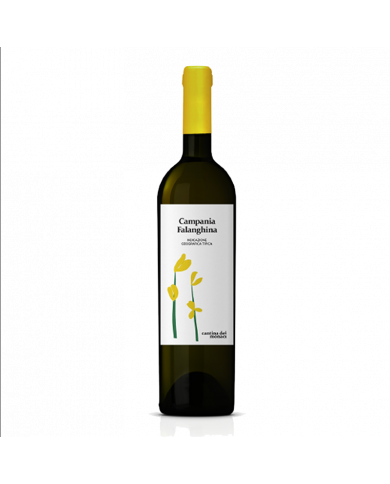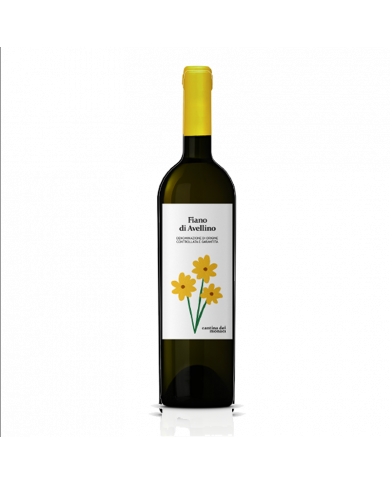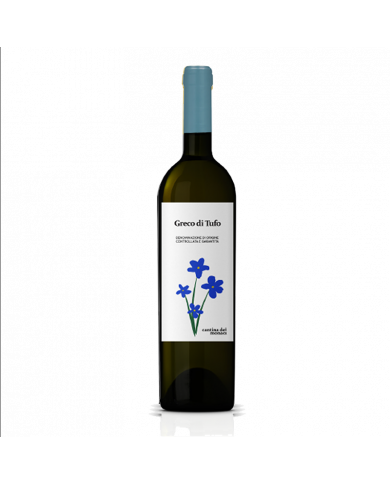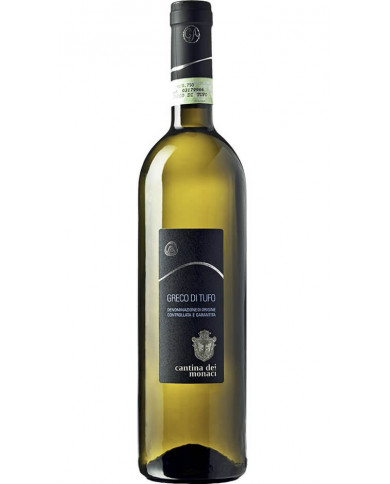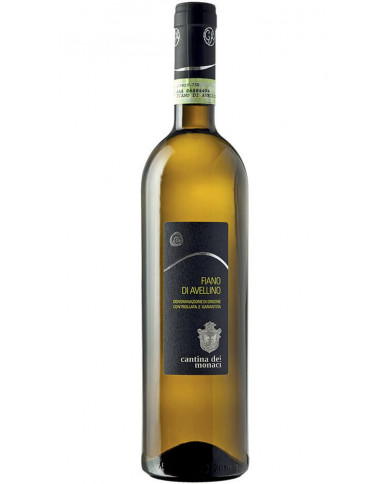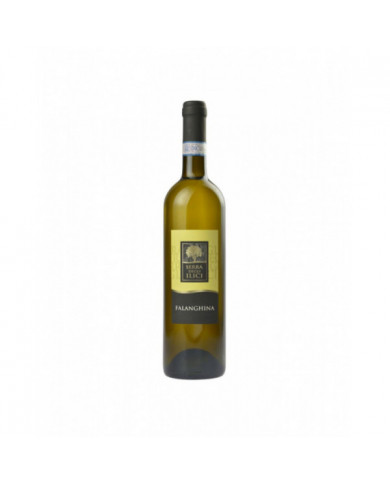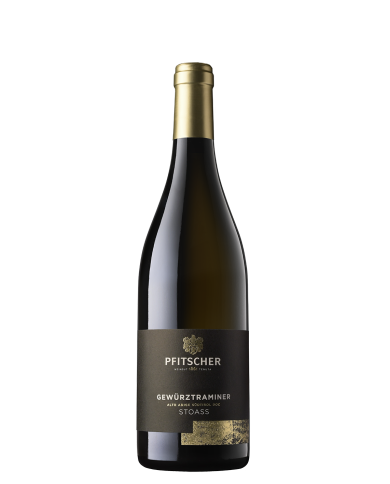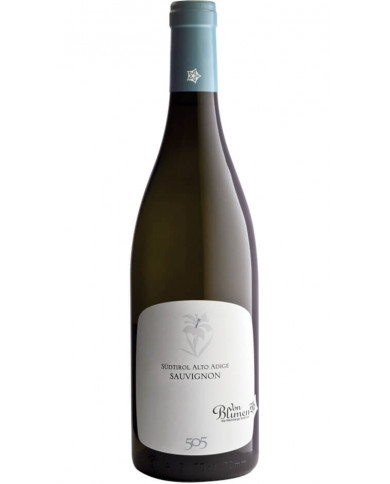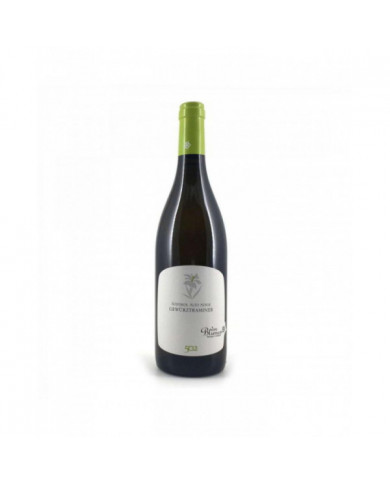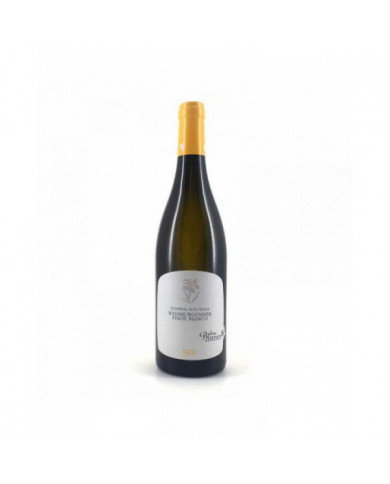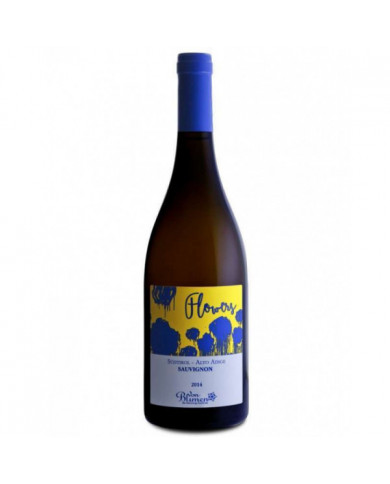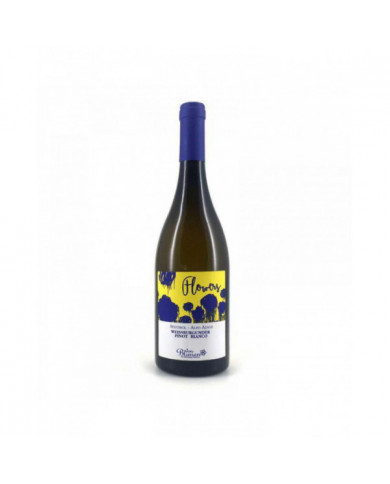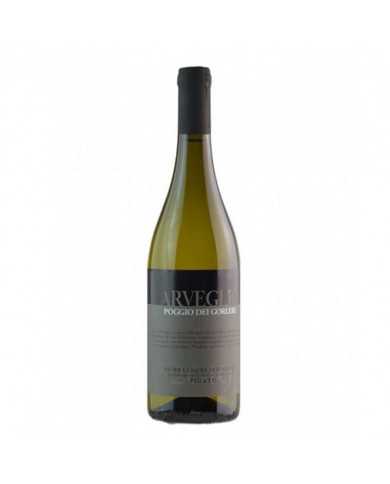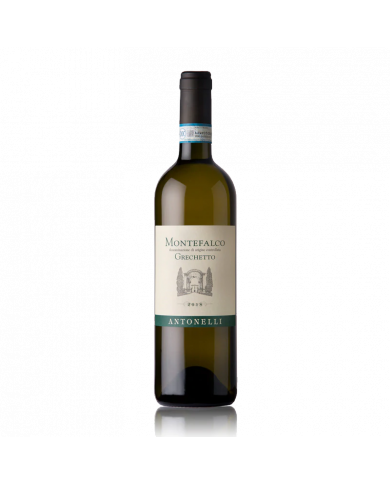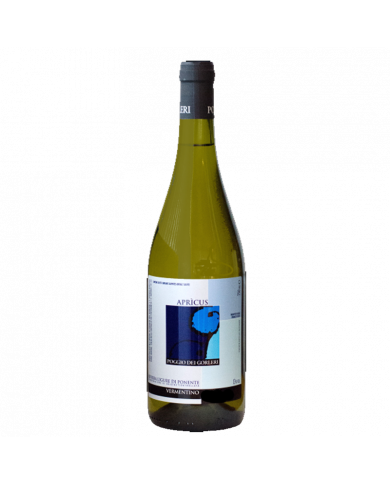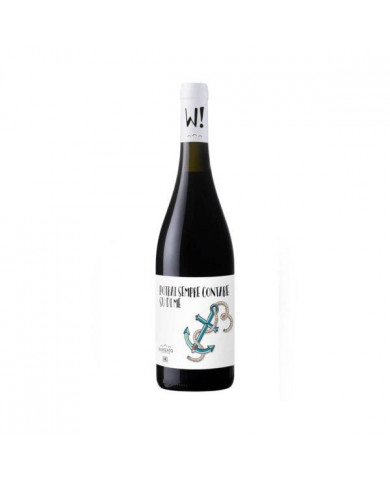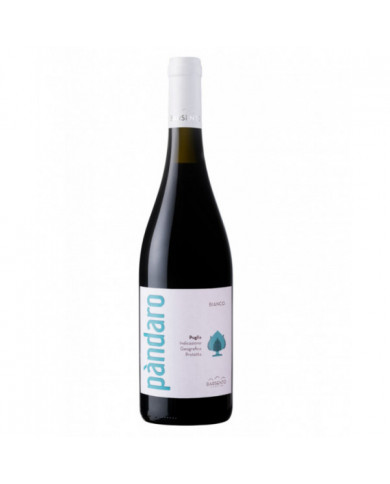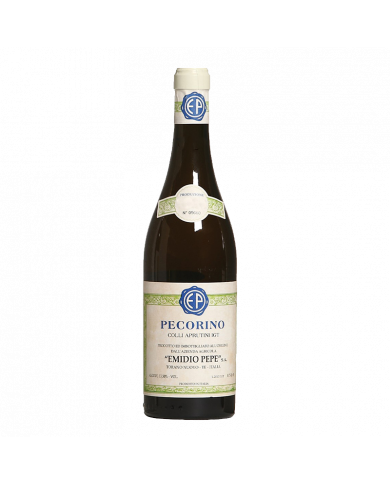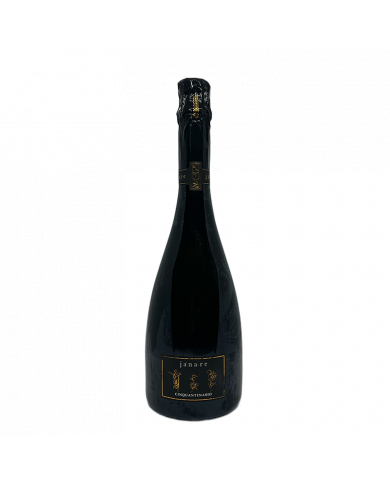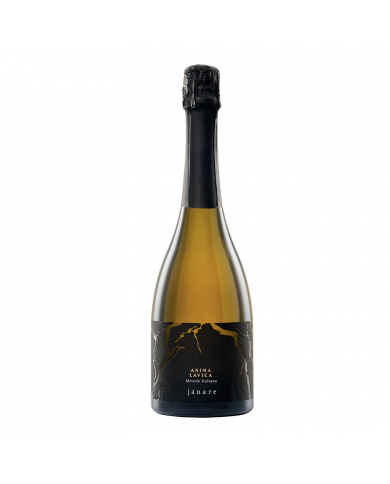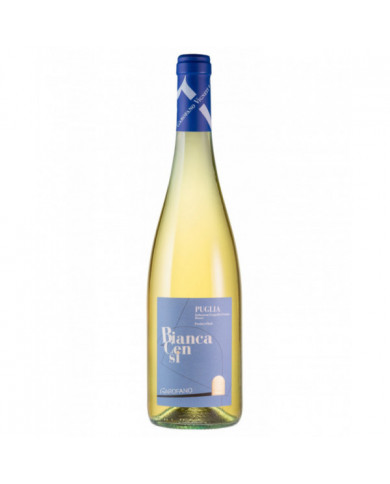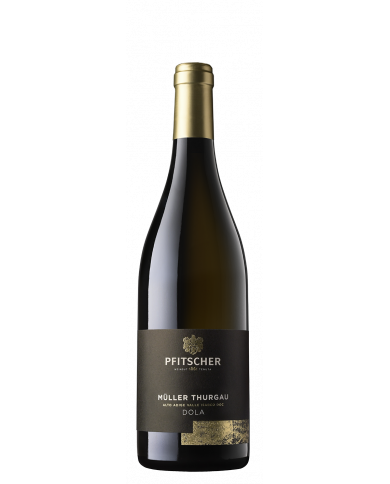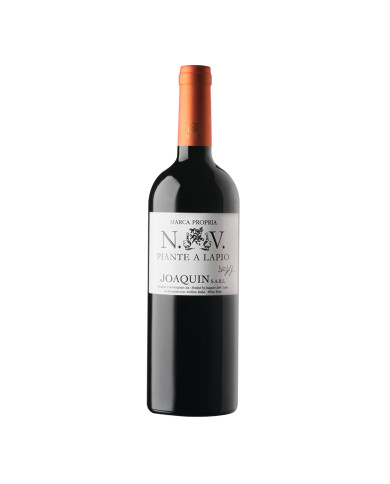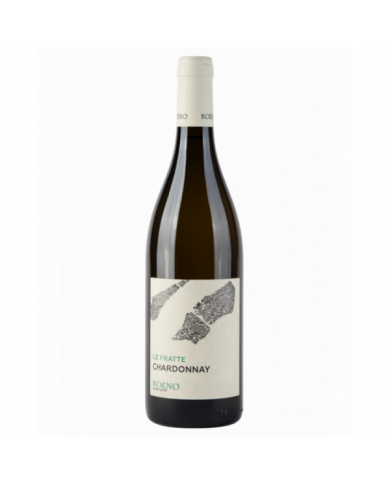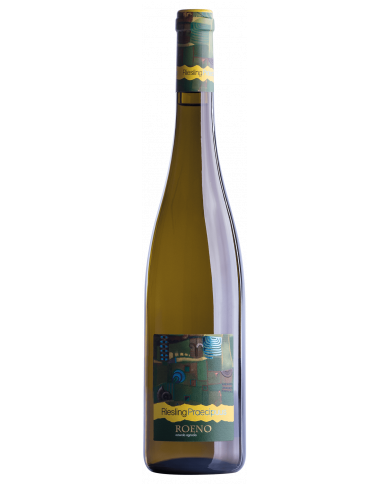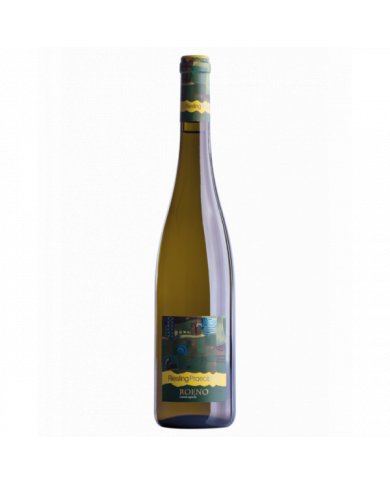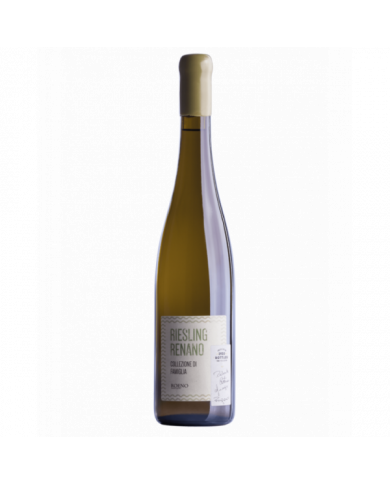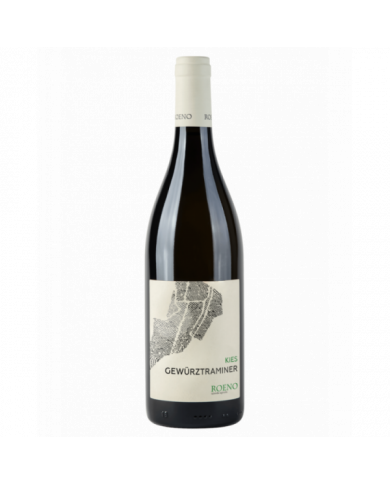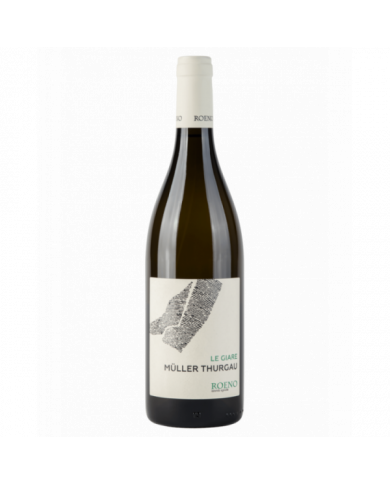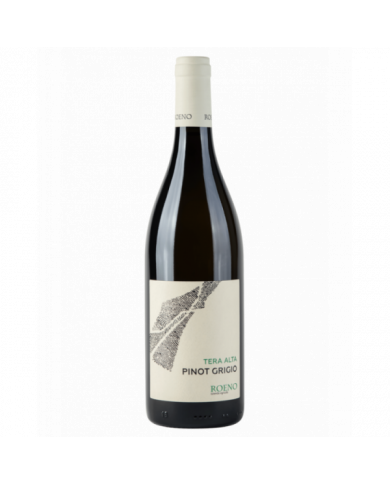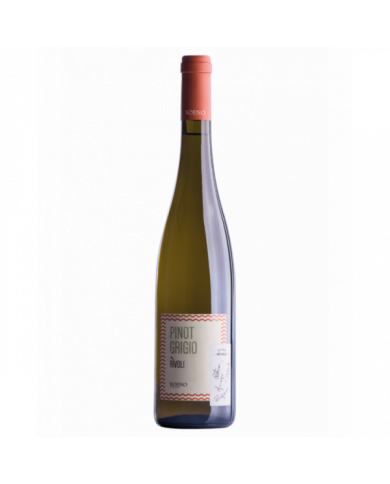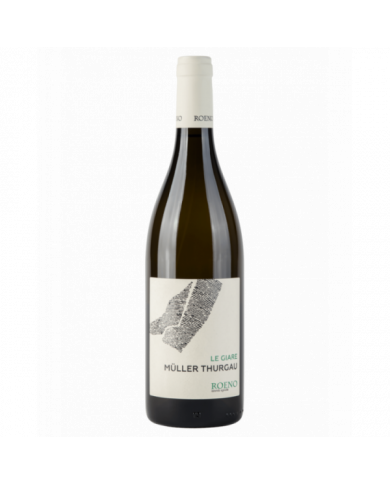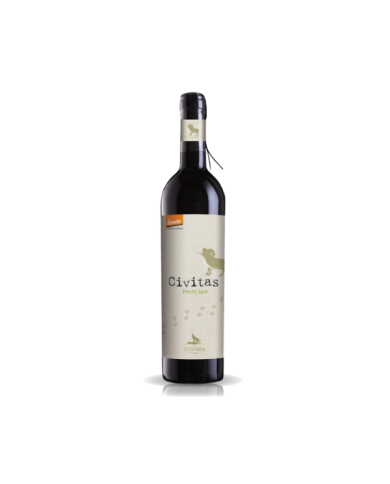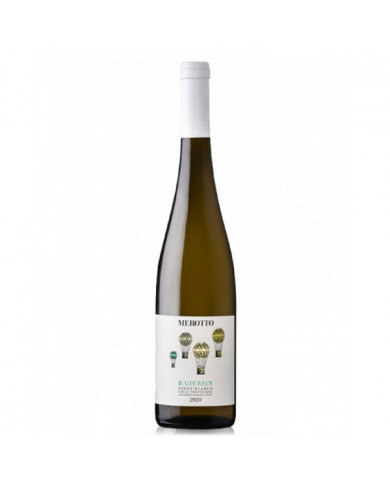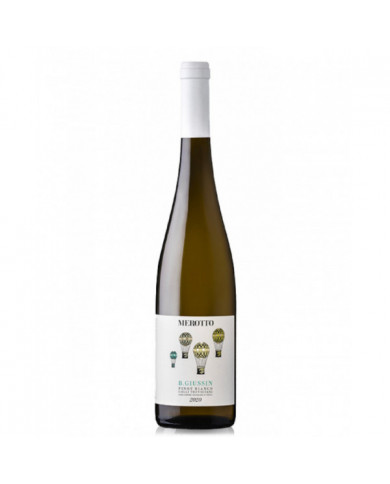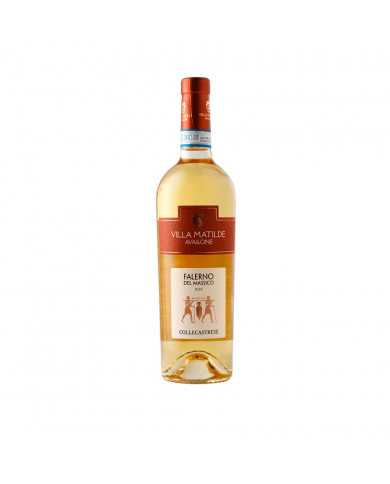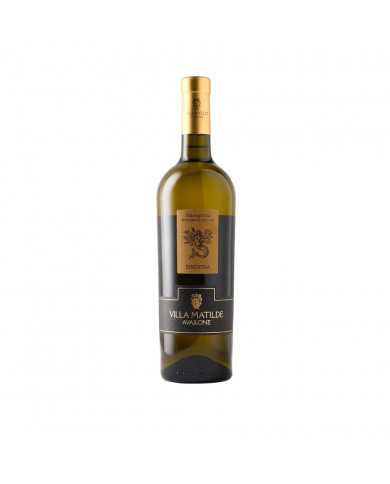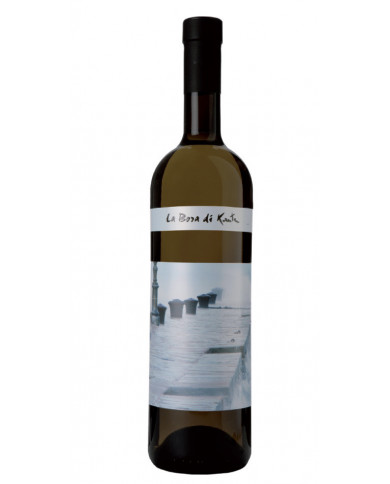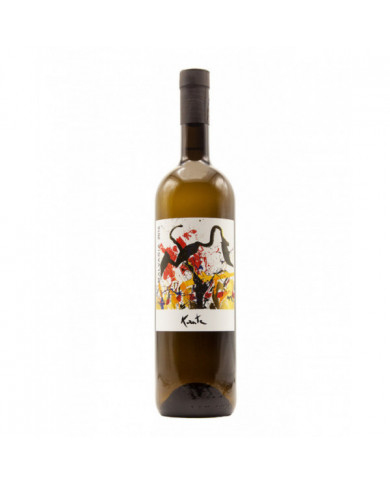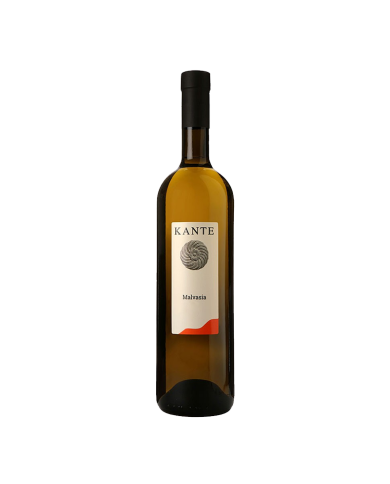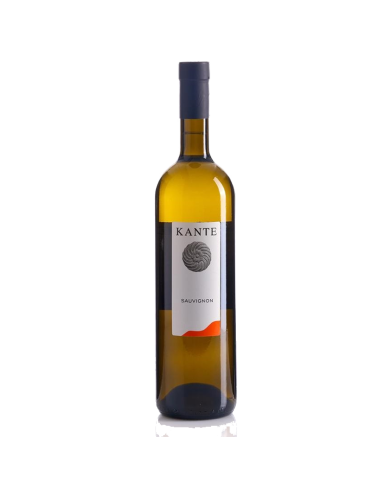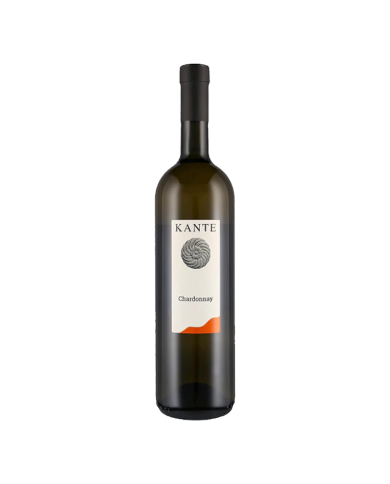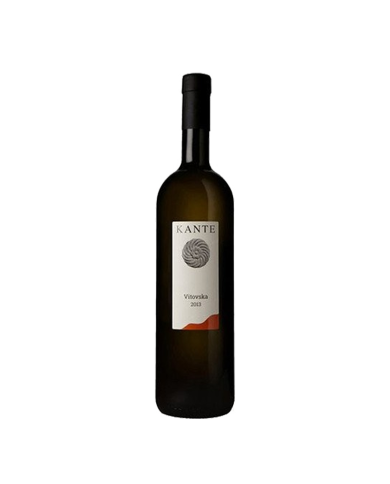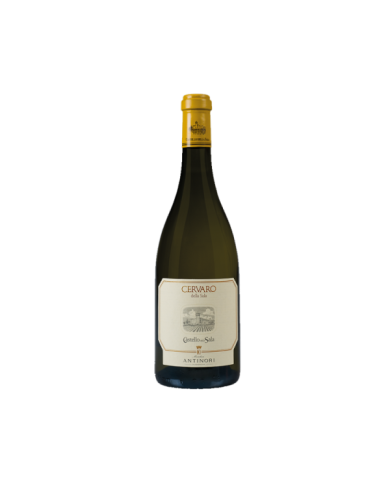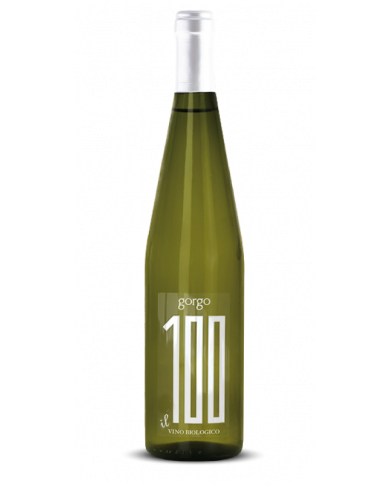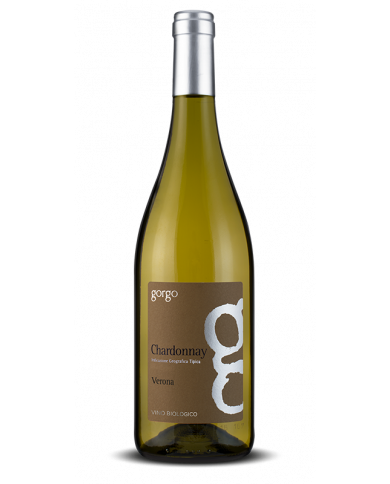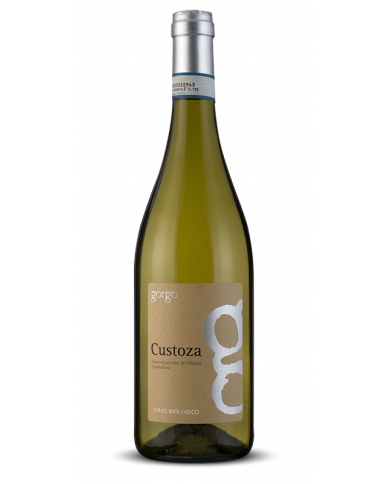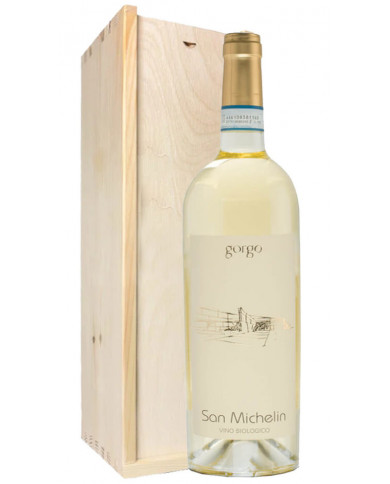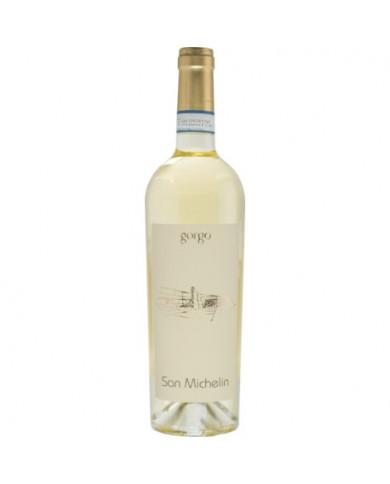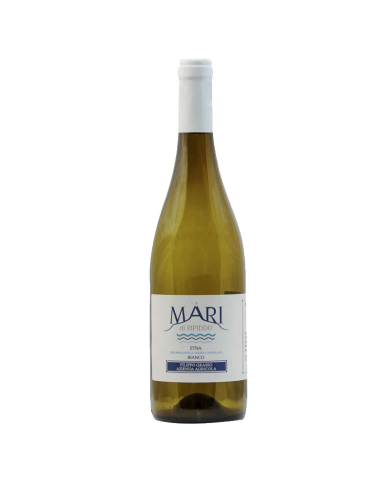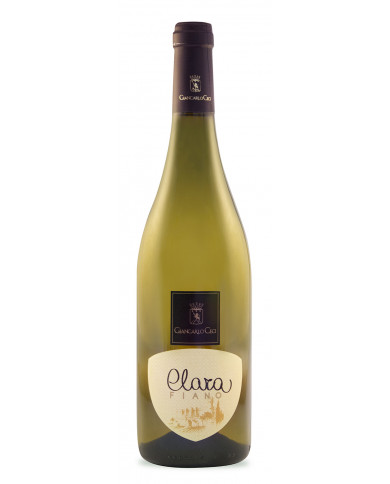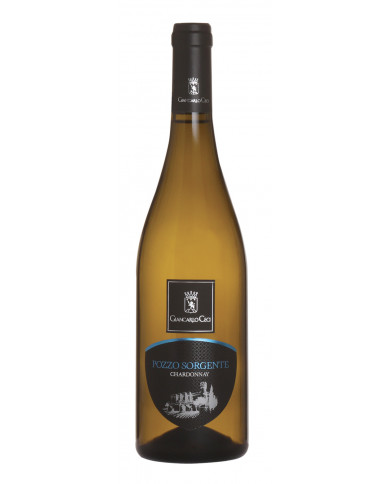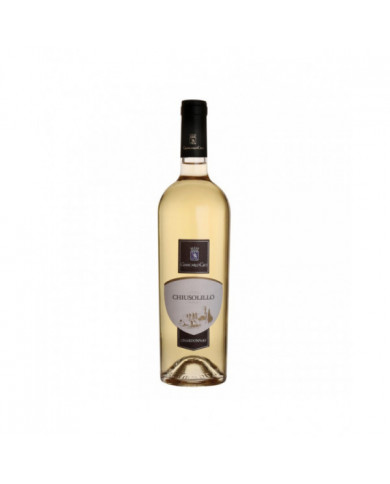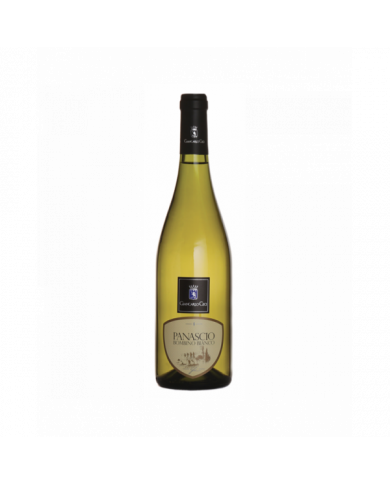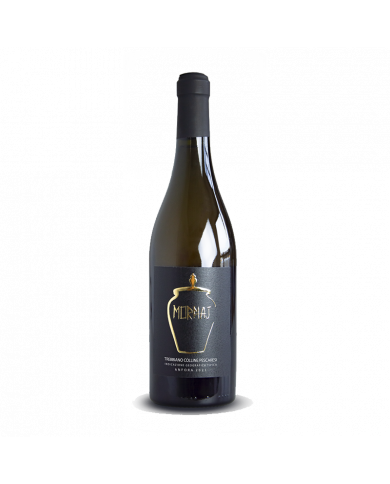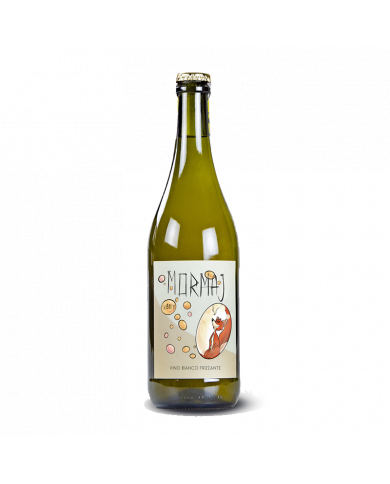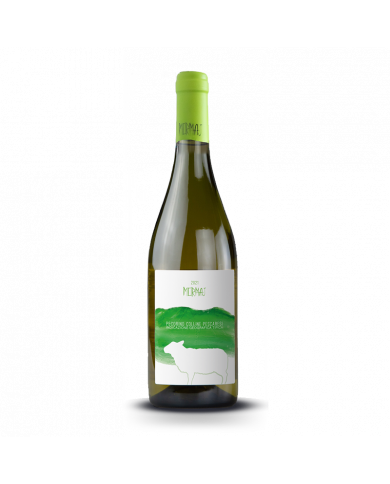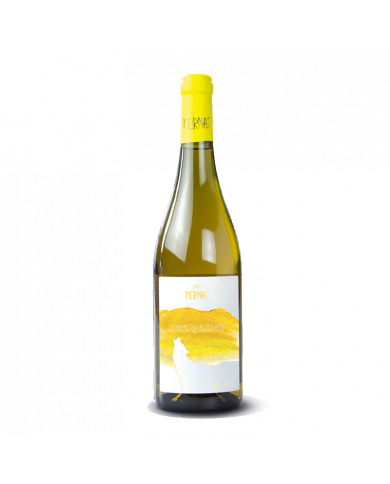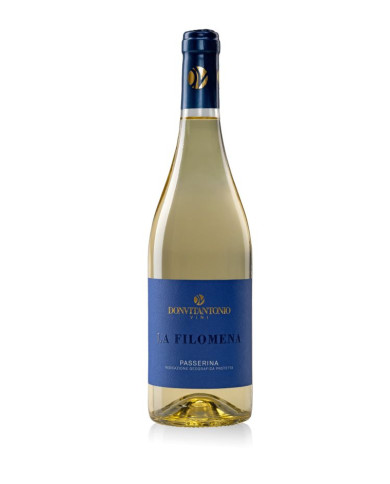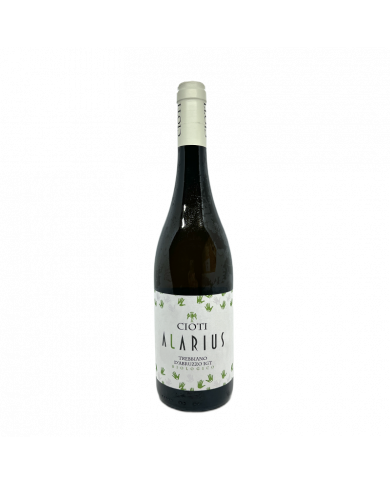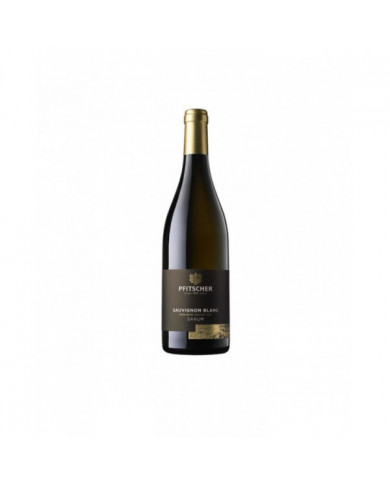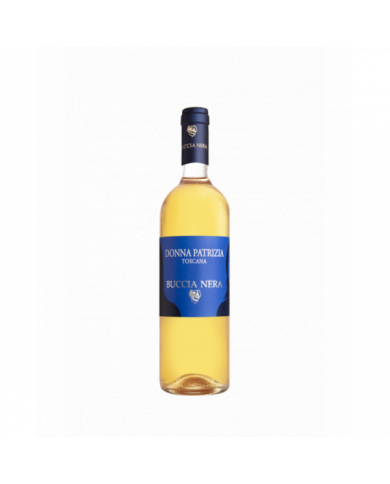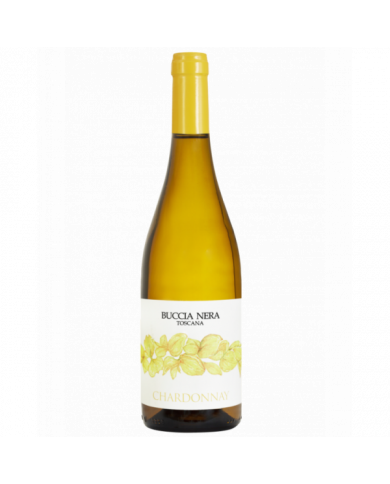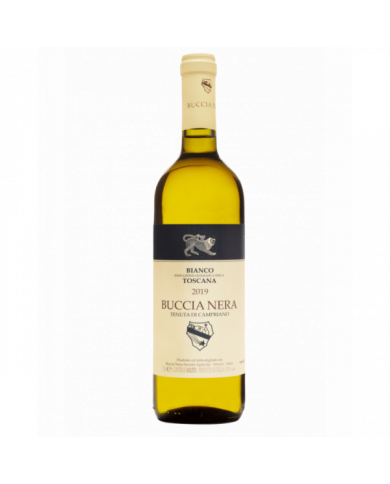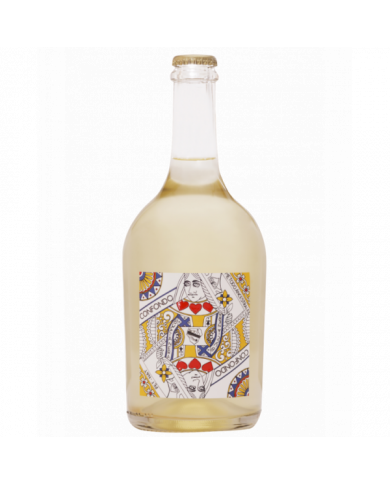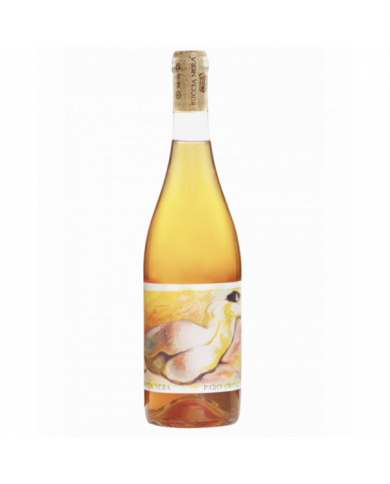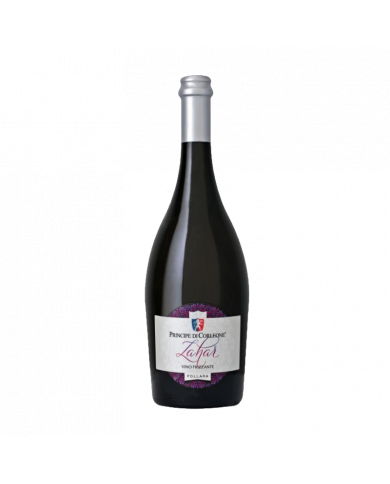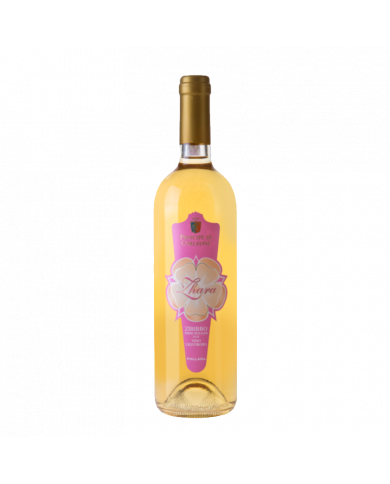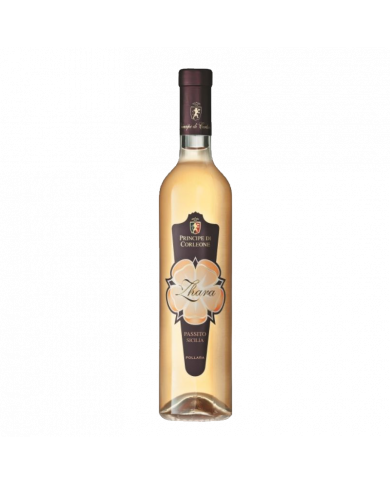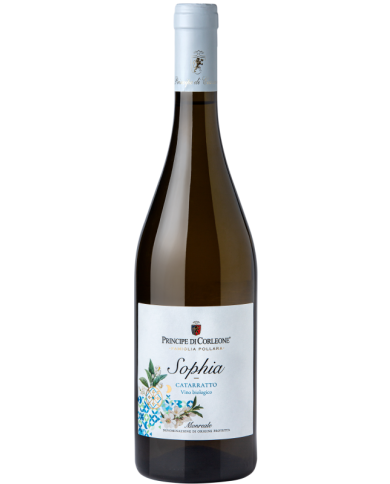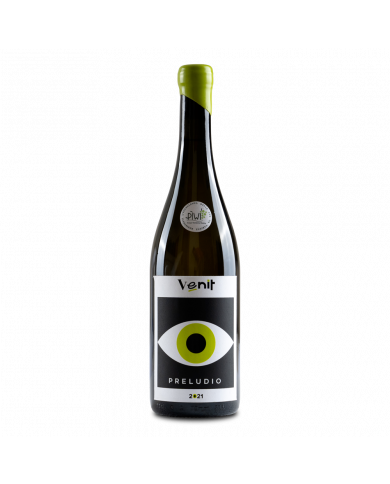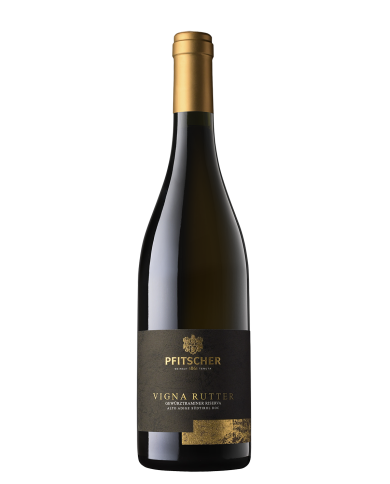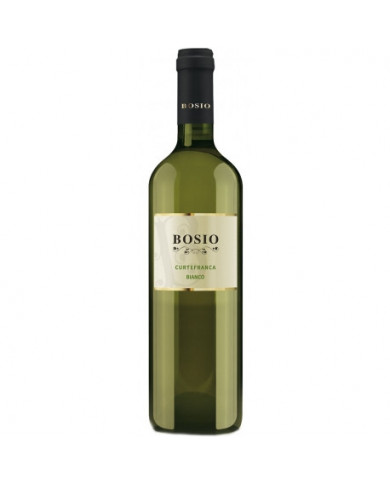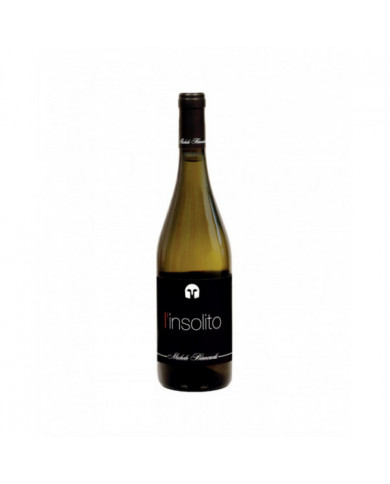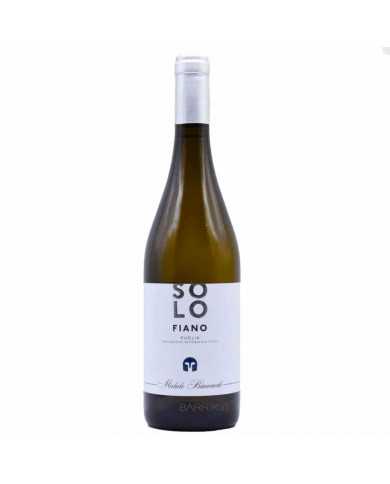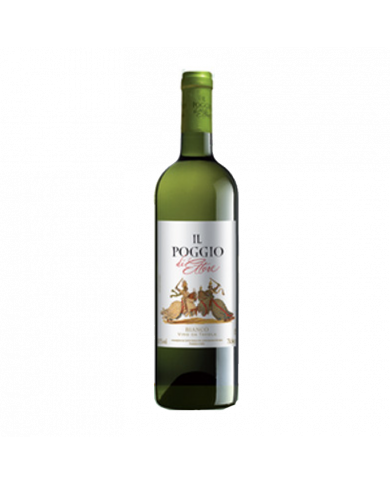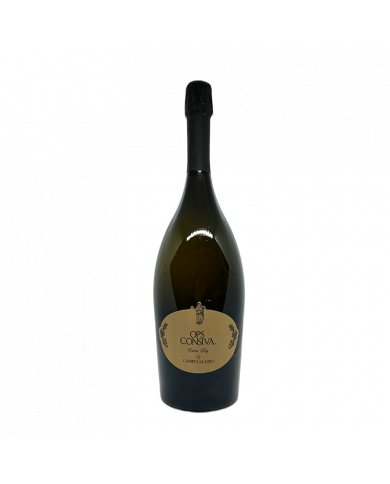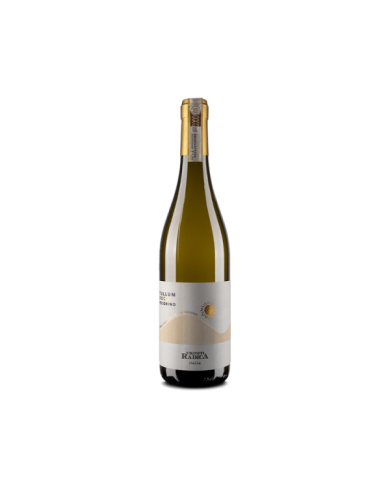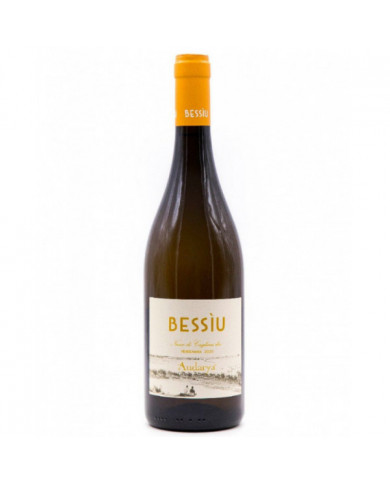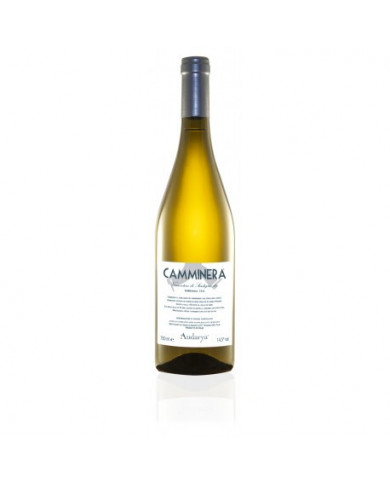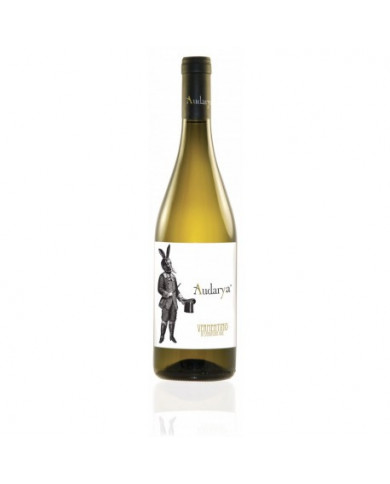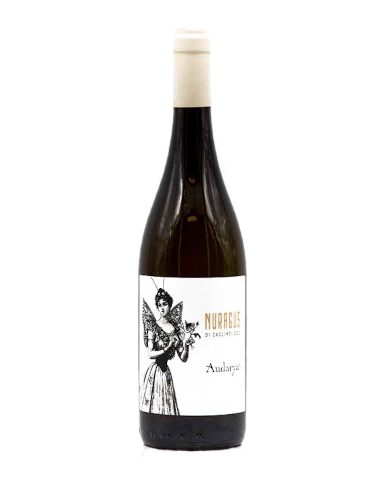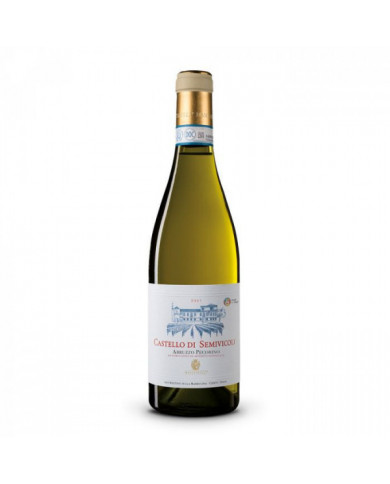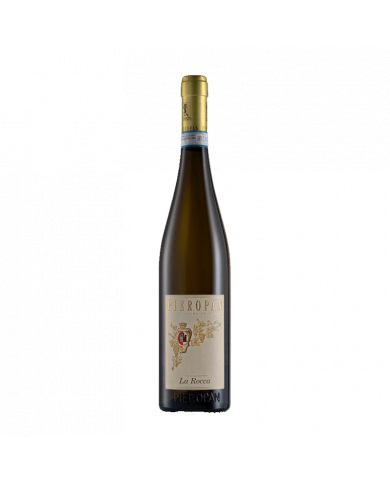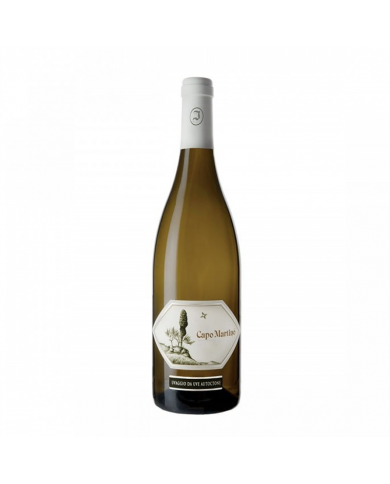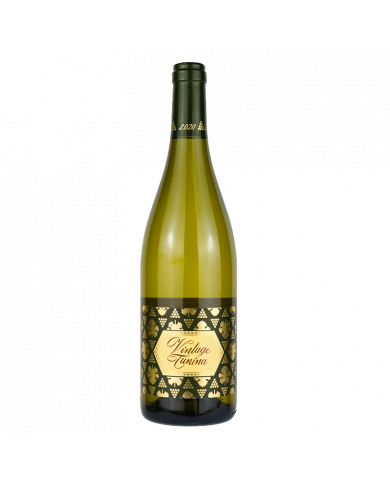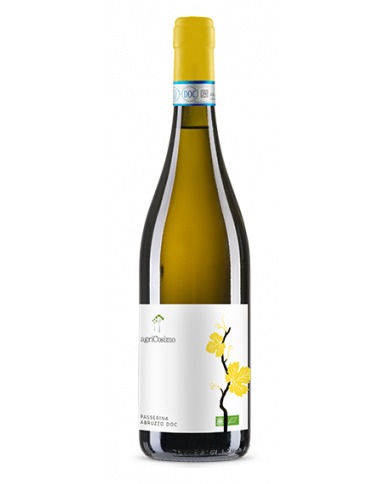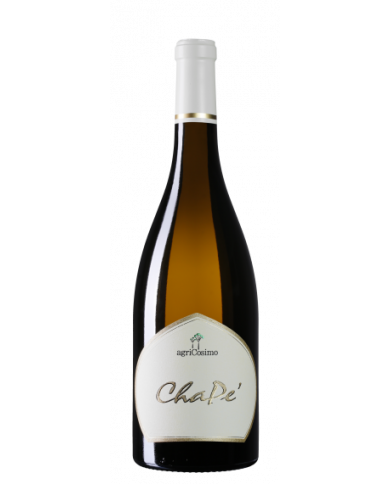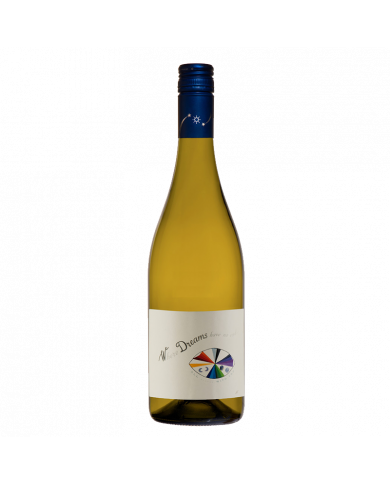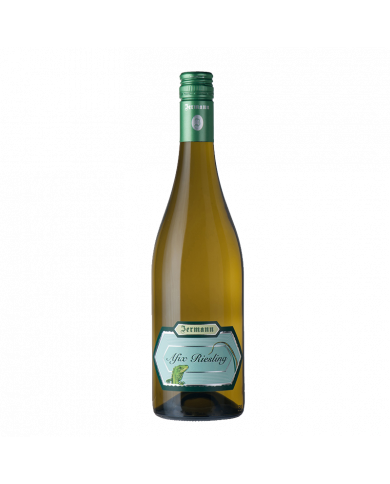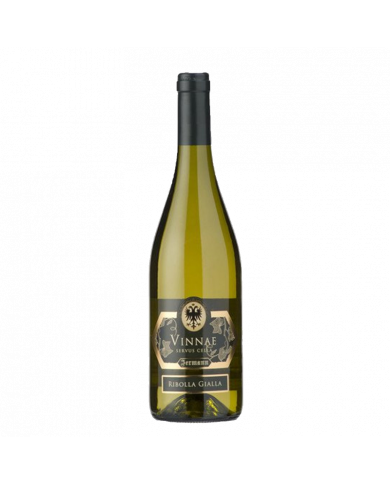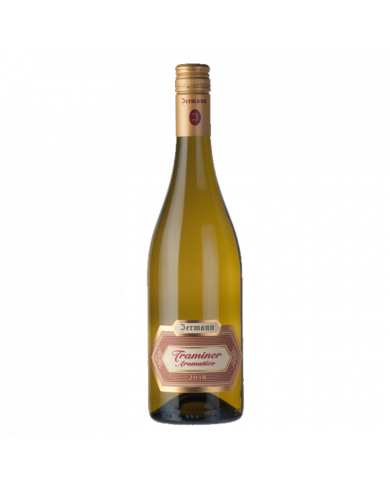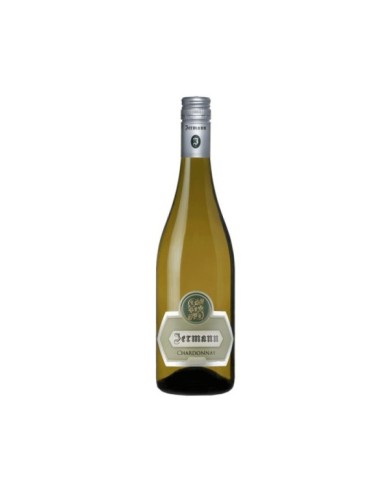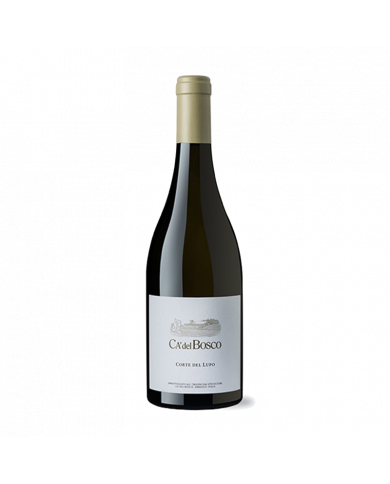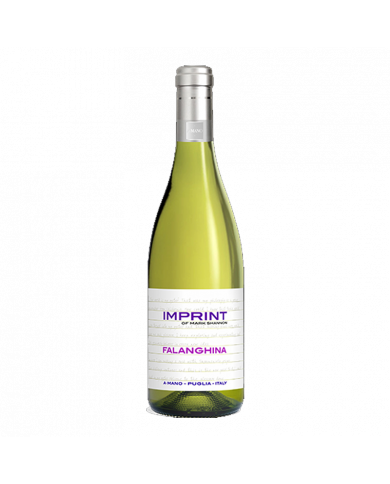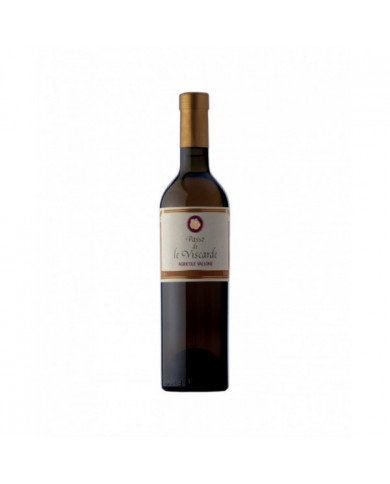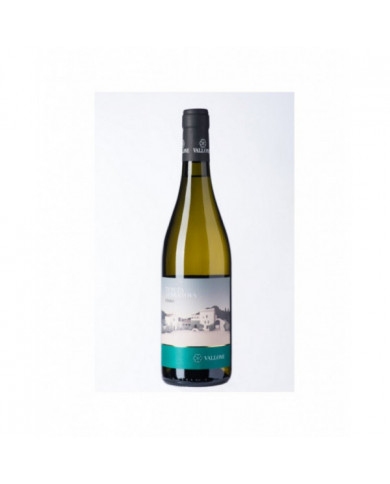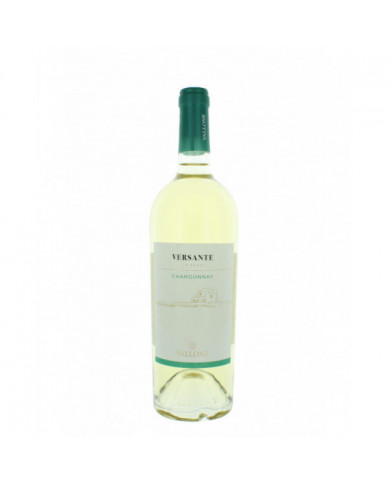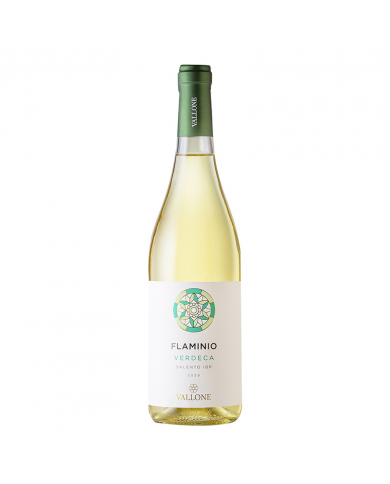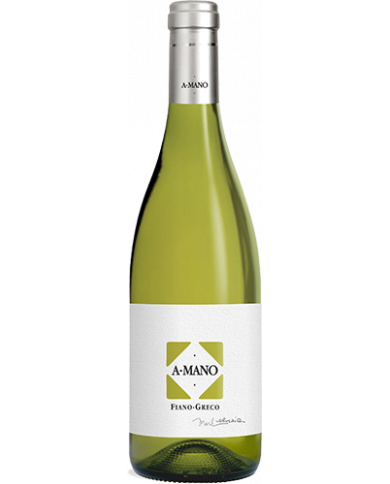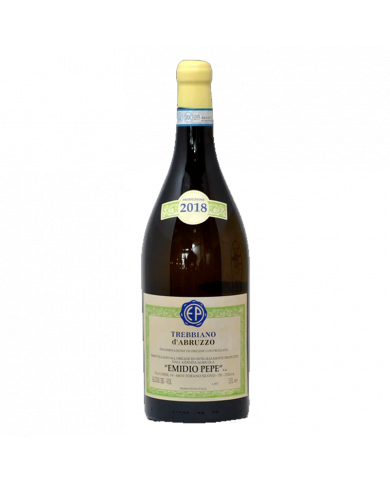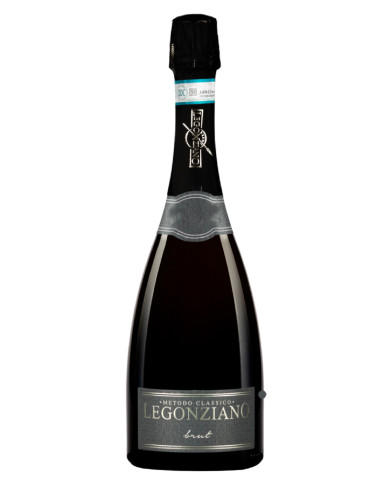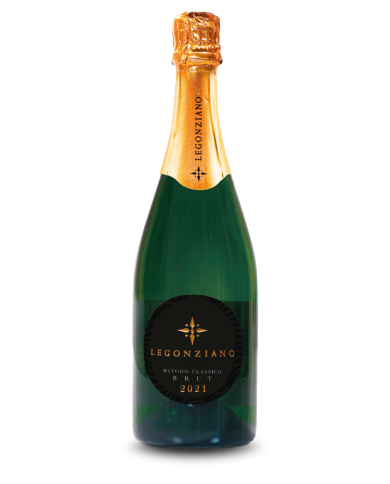Live wine, organic and biodynamic (Demeter) with spontaneous fermentation, without added sulphites, unfiltered, with fermentation lees.
Sauvignon Blanc is the white berried variety to which we owe some of the most popular dry white wines in the world. On the medium hills that accompany the course of the Adige river, characterized by strong temperature variations, this variety has found a particularly favorable microclimate providing a wine with distinctive aromatic notes. Traditional vinification with brief contact on the skins to ensure maximum conservation and transmission to the wine of the varietal aromas characteristic of the grape. Fermentation at controlled temperature (16-18┬░C).
Typical Central European vine, it has spread in Trentino expressing its characteristic aroma. Thanks to the care of the Mezzacorona members and the alpine climate, it best expresses the strong charge of fragrances, sapidity and balance. Traditional vinification with brief contact on the skins to ensure maximum conservation and transmission to the wine of the varietal aromas characteristic of the grape and fermentation at low temperatures (16-18┬░C).
Produced only with grapes from its own vineyards along the Adige Valley, at the foot of the Dolomites. It has compact bunches with very sweet gray-blue berries. It stands out for its characteristics of balance, finesse and elegance. The vinification is traditional with brief cold contact on the skins to increase the structure and richness of the wine and subsequent fermentation at a controlled temperature (18-20┬░C).
The wine has a medium intense straw colour. The nose reveals pleasant notes of citrus, honey and yellow peach and sometimes a characteristic hint of "beer". The taste is presented as a wine with body and structure, balanced by a good acidity that refreshes the palate.
Production area: Ortona. Abruzzo Vinification: The grapes are de-stemmed and pressed very softly, in contact with the skin for about 12 hours at 3 ┬║C. About 80% of the must is fermented in heat-conditioned stainless steel tanks at a controlled temperature of 12 C., the other 20% in 40hl oak barrels to release a moderate 'woody' and a more refined character. Pairings: Perfect with lobster, cream of vegetable soup and smoked fish, we also recommend it with roast chicken.
Production area: Acerenza, Basilicata. Grapes and Vinification: Greco 60%, Fiano 40%. Aging in steel on its own noble lees. Color and Pairing: White, ideal for aperitifs and fish soups.
The Soave Classico "Monte Alto" is a soft and fragrant white wine from the Veneto region, which the aging on the lees in barriques and oak barrels has contributed to rounding out. On the nose emerge aromas of flowers, yellow fruit and almonds. The sip is enveloping, fresh and intense, with a good structure. The "Monte Alto" belongs to the group of crus of Ca' Rugate, historic company of the Tessari family, born in the heart of Valpolicella, between Monteforte d'Alpone and Montecchia di Crosara, and witness for over a century of a viticulture closely linked to local traditions and local vines. Spread over an area of over 4000 meters and divided over 3 levels, the cellar allows the company to concentrate all the processes of vinification, refinement, bottling and storage in a single location. The owned vineyards, located on the Rugate hill which gives the company its name, are cultivated partly with the Veronese pergola system, partly with the guyot system. On the south-facing slopes, where the cultivation of vines finds particularly favorable conditions, the soil is basaltic and rich in clay and silt. The area is vast and rather homogeneous, with characteristics that have made it possible to identify particular micro-areas, suitable for obtaining a fresh, balanced, persistent Soave Classico with great personality. These are the territorial premises that give rise to this warm and soft wine, with a structure capable of supporting a remarkable evolution after a few years of age, the Soave Classico "Monte Alto" is produced with the best grapes from the vineyards of Monteforte d'Alpone, bringing with it a varietal expression of extremely high quality which thus seals the great relationship established over time between the Ca' Rugate company and the hills of Soave.
Under the hut sparkling white wine A PICCIUOLA PE RITTA
The Chardonnay of the Marchesi di Gresy is a white with great structure, a Piedmontese expression of a classic Burgundian. The grapes are grown on Monte Aribaudo near Treiso and then the must ages for a long period in wood, a full 22 months, an aspect that gives body, softness and tertiary notes of spices and toasting. Peculiar the pleasant sapidity that accompanies the sip and persists for a long time
Armida is a sensitive woman full of life, ingenious and funny. It fascinates by its audacity. Born in Corleone, she then moved to the Etna city. This wine symbolizes his character and his life. A'mami is a surprising and strong accord between the Carricante grapes of Etna and the Chardonnay grapes of the Corleone vineyards. The tension of Carricante meets the elegance of Chardonnay.
Typology Fortified wine
Capacity 0.75L
Alcohol content 14.5 ┬░
Piemonte region
Pairings
Raw fish and shellfish, fish dishes in general also excellent with fresh or stretched curd cheeses.Company : Cantina Tollo Wine region : Abruzzo (Italy) Appellation : Terre di Chieti IGT (IGP) Vegan Type : white, dry, still Variety : Pecorino 100% Alcohol content : 13% Year : 2021 Format: 750 ml
A wine that tells the authenticity of nature, just as bees are proof of the quality of food.
Pairings
Excellent as an aperitif or with fish-based dishes, white meats and fresh cheeses
Pairings
Excellent as an aperitif and with all seafood cuisine, white meats and fresh cheeses.Produced only with grapes from its own vineyards in the medium-high hills of the Cembra Valley. It comes from the vine of the same name obtained in 1882 by the researcher Hermann M├╝ller in the Swiss town of Thurgau from the cross between the Rhine Riesling and Chasselas varieties. The vinification is traditional with brief contact on the skins to ensure maximum conservation and the transmission to the wine of the varietal aromas characteristic of the grape. Subsequent fermentation at controlled temperature (18-20┬░C).
The Chardonnay Riserva comes from a selection of the best vineyards grown on the slopes of the Trentino mountains between 250 and 500 m above sea level. The preferred soils are of alluvial and draining origin. The grapes are harvested well ripe and characterized by a golden yellow colour, an indication of high aromatic richness. The skilful blending of wines obtained from vineyards located at various altitudes and with different exposures results in a wine that is ripe and rich but also fresh and fragrant. The grapes are harvested in September, partly subjected to cold maceration to increase the extraction of aromas and subsequently subjected to soft pressing. The must is fermented with the addition of selected yeasts, half in steel and half in lightly toasted French oak. The wines mature for 8 months in wood and 4 months in steel. The part that ages in barrique also carries out the malolactic fermentation and repeated batonage (resuspension of the fermentation yeasts) is carried out. Finally, 3-4 months of aging in the bottle follow.
The Pinot Grigio variety has been cultivated for a long time in the Adige Valley, where it is also known under the name of Rul├żnder. The shape of the bunches and their "copper gray" color reveal its close relationship with the Pinot Noir from which it seems to derive. It prefers soils with moderate fertility both on the valley floor and on low hills. Pinot Grigio RISERVA comes from grapes grown in the vineyards of one of the most classic and suitable areas for this variety: called "Zablani", it is located north-east of the town of Mezzocorona and is characterized by well-drained alluvial soil, very similar to that of the adjacent classic area of Teroldego. The grapes are harvested by hand and delivered within a few hours to the cellar, where they are selected, immediately pressed and sent to the cold maceration and soft pressing stage. The alcoholic fermentation at a controlled temperature (16-18┬░ C) can last between 12 and 15 days. More precisely, part of the Pinot Grigio is fermented in steel (40%) while the remaining 60% is fermented in barrique. After fermentation, the wine remains in barriques for 6-8 months, during which periodic "batonage" operations are performed (resuspension of the yeast deposits). Between the 10th and 11th month, the wine fermented in steel and the wine fermented in wood are assembled, thus obtaining a product with the typical notes of vanilla and ripeness, but also with the freshness and fragrance typical of Pinot Trentino grey.
From the selection of the best Greco grapes for the Decimo Sesto and Aglianico grapes for the Monaco Rosso, these wines are born that want to be a reference, in harmony with the peculiar identities of the territory and at the forefront of sustainable wines. Enclosed in it, each bottle is ready to face time with patience and to finally be opened one day to start telling our story together with yours.
For more than a century this vine, originally from France and precisely from the Loire Valley area, has been grown on the hills of Alto Adige. The grape harvest takes place by hand, as in the past, starting from the beginning of September. After a gentle destemming, the grapes undergo a short cold maceration in a stainless steel press. The alcoholic fermentation takes place in steel tanks at a controlled temperature. At the end of alcoholic fermentation, the wine is kept in contact with the lees, in stainless steel containers for about 6 months. The Sauvignon has a yellow color with light green reflections. On the nose the scent is fresh, with extravagant hints of nettle, pepper, tomato leaves and anise. On the palate the flavor is intense and persistent with a good aroma and a savory and gritty acidity. A versatile goblet that goes perfectly with all courses at the table and after the first sip it will take you back to the unspoiled nature on the slopes of Monte Corno.
The name Traminer appears for the first time in 1349 in Konrad Megenberg's "Book of Nature". The origins of this vine are uncertain; some believe they are in Alsace, others in the town of Termeno (Bolzano), still others in Wurttemberg, and finally in the Reno valley. The grapes are harvested manually in boxes. After a delicate destemming, cold maceration follows at a temperature of 12┬░. The alcoholic fermentation takes place in steel tanks at a controlled temperature; at the end of alcoholic fermentation, the wine is kept in contact with the lees, in stainless steel containers for about 6 months. In the glass it has an intense straw yellow color. On the nose, the aroma is intense and varied with aromas ranging from yellow pulp fruits, lychee, rose, acacia flowers and saffron. On the palate it immediately proves to be a wine of great structure and balance based on sapid and fresh notes, supported by a never invasive softness and characterized by delicious almond nuances. An eclectic goblet that is excellent on the table as an aperitif or to accompany shellfish dishes, ethnic cuisine and spicy flavours.
For more than a century this vine, originally from France and precisely from the Loire Valley area, has been grown on the hills of Alto Adige. The grape harvest takes place by hand, as in the past, starting from the beginning of September. After a gentle destemming, the grapes undergo a short cold maceration in a stainless steel press. The alcoholic fermentation takes place in steel tanks at a controlled temperature. At the end of alcoholic fermentation, the wine is kept in contact with the lees, in stainless steel containers for about 6 months. The Sauvignon has a yellow color with light green reflections. On the nose the scent is fresh, with extravagant hints of nettle, pepper, tomato leaves and anise. On the palate the flavor is intense and persistent with a good aroma and a savory and gritty acidity. A versatile goblet that goes perfectly with all courses at the table and after the first sip it will take you back to the unspoiled nature on the slopes of Monte Corno.
Production notes Pinot Bianco ''Flowers'' is a white wine aged for 10 months in tonneaux. Malolactic fermentation can be total or partial. Tasting notes Pinot Bianco ''Flowers'' is a straw yellow white wine with green transparencies. Perfumes of white flowers and flint with vegetal notes in the background. Fresh and mineral taste of ripe pineapple, sage and anise.
The Grechetto in purity, expression of the Umbrian tradition of white wines and of the protected designation area of Montefalco.
Manual harvest. Destemming and low temperature fermentation. The crushed grapes remain at a low temperature for a few hours before fermentation, after which the soft pressing takes place. Fermentation continues at around 18┬░. It remains three months in steel before being bottled. After bottling it remains in cavea karso for another 2 months.
Pecorino by Emidio Pepe is a white wine with a great personality, full-bodied and intense, which gives us floral and yellow fruit notes on the nose, with a herbaceous finish. The sip has a very pleasant mineral note and a vertical taste of great persistence.
Brilliant straw yellow colour, characteristic fruity bouquet of good intensity with hints of cedar, citrus, white fruit and yeasts. Pleasant, with a good structure and excellent persistence. Balanced.
Straw yellow color with green reflections. The nose expresses floral hints of orange blossom completed by nuances of flint and yeasts. The taste is elegant, savoury, soft and very persistent, confirming the olfactory hints of citrus.
Precious light white wine, characterized by a slight acidity and a fruity bouquet. The nose captivates with delicate notes of nutmeg and stone fruit. The clear yellow-green color of this dry white wine captivates with its fruity and intense flavour.
From the ambitious project of the Cantina Roeno was born "PRAECIPUUS" obtained from Renano riesling grapes. The choice of the Latin name is a tribute to the excellence of the product obtained. Praecipuus: extraordinary, excellent. First vintage of Praecipuus 2009.
First vintage produced: 2010 vintage Average number of bottles produced: 3500 bottles c. It was born because: the Fugatti family has always been in love with this unique and sensorially unrepeatable vine. During many climatically different harvests, small batches of grapes from the most suitable parcels were isolated, with the aim of better understanding their expressive potential and understanding their evolution after prolonged refinement. The results of this long experimentation led to the birth, with the 2010 vintage, of a different Riesling, conceived to raise the value and uniqueness of this extraordinary vine to the utmost excellence.
wine of great balance based on savory and fresh notes, supported by a great softness, excellent structure and important aromatic persistence.
Rìvoli, from the name of the locality of choice. A Pinot Grigio of decided freshness, rich in facets, with a marked persistence and intensity.
The M├╝ller-Thurgau Frizzante di Roeno is a fresh white wine excellent to drink on warm summer evenings. At sight it has a straw yellow color
Grape variety: CHARDONNAY 100% fermentation in stainless steel tanks Altitude: 410 meters slm Slope: 17% facing East Training system: Low Guyot Soil: 30% tufa - 68% sandstone - 2% calcium Average yield per hectare: 55 hl.
Grape variety: CHARDONNAY 100% fermentation in stainless steel tanks Altitude: 410 meters slm Slope: 17% facing East Training system: Low Guyot Soil: 30% tufa - 68% sandstone - 2% calcium Average yield per hectare: 55 hl.
Grape variety: RIESLING RENANO 100% fermentation in stainless steel tanks Altitude: 540 meters slm Slope: from 30% to 65% facing South - South East Training system: Low Guyot Soil: 60% tuffaceous - 38% sandstone - 2% calcium and gypsum ŌĆŹAverage yield per hectare: 62 hl.
Grape variety: CHARDONNAY 20% fermentation in stainless steel tanks PINOT NERO 80% fermentation in stainless steel tanks Altitude: 410 - 450 meters slm Slope: 24% facing East Training system: Low Guyot Soil: 35% tuff - 60% sandstone - 5% calcium ŌĆŹAverage yield per hectare: 65 hl.
Grape variety: CHARDONNAY 100% fermentation in stainless steel tanks Altitude: 410 meters slm Slope: 17% facing East Training system: Low Guyot Soil: 30% tufa - 68% sandstone - 2% calcium Average yield per hectare: 55 hl.
Grape variety: 100% MOSCATO BIANCO DI CANELLI Altitude: 480 meters slm level Slope: 67% with South West exposure Training system: Low Guyot Soil: 45% tuffaceous - 48% sandstone - 7% calcium Average yield per hectare: 19 hl.
The whole bunches are sent to the pneumatic press and the must is fermented with its indigenous yeasts at a low temperature (12-14 ┬░ C) in stainless steel tanks for about 30 days. The refinement takes place in steel tanks and, subsequently, in the bottle. At tasting it has a straw yellow color. Intense aroma with hints of broom, white pulp fruit, and ethereal. Fresh, intense, savory and full-bodied taste. Excellent to accompany an elaborate seafood cuisine, medium-aged cheeses, structured first courses, white meats.
Grape variety: CHARDONNAY 100% fermentation in stainless steel tanks
Altitude: 580 meters slm level Slope: 26% with North West exposure Training system: Low Guyot Average yield per hectare: 45 hl.
Grape variety: CHARDONNAY 100% fermentation in stainless steel tanks Altitude: 410 meters slm Slope: 17% facing East Training system: Low Guyot Soil: 30% tufa - 68% sandstone - 2% calcium Average yield per hectare: 65 hl.
Grape variety: 100% CANELLI WHITE MOSCATO
Altitude: 360 meters slm level Slope: 32% with South West exposure
Training system: Low Guyot
Soil: 45% tuffaceous - 48% sandstone - 7% calcium ŌĆŹ
Average yield per hectare: 65 hl.
We have tried to make the production process of this grape must as simple as possible, in order to maintain the primary, exclusive characteristics of the Moscato grape. The must obtained by softly pressing the grapes is placed in a cold room at a temperature of 0 ┬░C. The real processing of this product simply consists in taking it from the cold room and placing it in the autoclave where it will undergo an initial increase in temperature (up to 15 ┬░C) and subsequently a fermentation such as to transform just 3% vol. of alcohol. The grape must which has now become El Cali├® will then undergo a lowering of temperature to 0 ┬░C, a small stop in the autoclave once the fermentation is now completed and the subsequent bottling.
Grape variety: 100% CHARDONNAY
Altitude: 390 meters slm
Slope: 18% with North East exposure
Training system: Low Guyot
Soil: 30% tuffaceous - 68% sandstone - 2% calcium ŌĆŹ
Average yield per hectare: 65 hl.
The straw yellow color, the intense and persistent aroma with hints of white peach, apricot and sweet almond mixed with mineral and citrus notes, the vigorous, fresh and rich flavor describe a wine of character and marked typicality.
The straw yellow color, the intense and persistent aroma with floral and fruity notes of yellow fruits, pear and hazelnut which evolve over time into hints of exotic fruits and honeyed references, the taste, of marked typicality, persistent and balanced, gives life to a elegant, fine and long-lived wine.
Bright red in color with violet reflections, it has an intense and persistent aroma of spices, blackberries, ripe red fruit and a warm, full and velvety flavour. A large wine, with a modern, captivating profile and solidly linked to the territory.
It has a pale straw yellow colour. The scent is fruity and floral: hints of pineapple, banana, yellow peach intertwine with notes of broom, rose and sage. The flavour, balanced and pleasant, adds delicately almond sensations to the olfactory experience. Wine to be consumed as an aperitif and in combination with light dishes, fish preparations and white meats.

24-carat white: Gold is pure 24-karat, as is our wine.
The best selection of our territorial white berried grapes. From the most suitable vineyards, respecting nature and practicing a viticulture that respects the territory.
Produced only in the best years with grapes harvested in the vineyard of the same name, one of the oldest and best exposed in the locality of San Castrese at the foot of the extinct volcano of Roccamonfina. Intense straw yellow color with golden reflections, characteristic aroma of lemon flowers, apple, banana, pineapple, eucalyptus and pine needles. Sapidity and minerality compete to give their olfactory contribution. With a full, velvety and persistent flavour, it is undoubtedly an elegant wine with character to be tried not only on the typical seafood cuisine but also in more structured dishes.
The straw yellow color with golden reflections and a fine and elegant perlage thanks to the long stay on the lees. It opens for tasting with delicate aromas of ripe fruit intertwined with hints of yeast and bread crust. The taste is fresh, elegant and harmonious, with a sour finish and intense fruity notes combined with pleasant almond sensations. Ideal as an aperitif, it can be perfectly accompanied with soups and risottos. It goes well with Mediterranean cuisine based on fish or as an accompaniment for buffalo mozzarella, vegetables, legumes and white meats.
"salty, spicy, fragrant" my Malvasia is the only variety with which I was able to capture the taste of the sea and iodine
I wanted to conceive Chardonnay because I knew that with this limestone, our draining soils and the sudden changes in temperature due to the Bora I could create an inimitable wine
our elders positioned the rows of Vitovska in the first row to the north-east because with their resistance they were the protectors of all the other varieties against the Bora
Refined and intense, structured and persistent , it is obtained from Chardonnay grapes with a small percentage of Grechetto, a native grape that brings acidity and binds it even more to the territory. The vinification takes place in Allier and Troncaise barriques, where the wine then matures for six months before being bottled and left to refine for another 10 months.
Refined and intense, structured and persistent , it is obtained from Chardonnay grapes with a small percentage of Grechetto, a native grape that brings acidity and binds it even more to the territory. The vinification takes place in Allier and Troncaise barriques, where the wine then matures for six months before being bottled and left to refine for another 10 months.
Refined and intense, structured and persistent , it is obtained from Chardonnay grapes with a small percentage of Grechetto, a native grape that brings acidity and binds it even more to the territory. The vinification takes place in Allier and Troncaise barriques, where the wine then matures for six months before being bottled and left to refine for another 10 months.
Refined and intense, structured and persistent , it is obtained from Chardonnay grapes with a small percentage of Grechetto, a native grape that brings acidity and binds it even more to the territory. The vinification takes place in Allier and Troncaise barriques, where the wine then matures for six months before being bottled and left to refine for another 10 months.
Synonymous with "sparkling" and contagious joy, it is the wine for aperitifs on long evenings, but with its moderate alcohol content, it is also appreciated by those who, for health reasons or food choices, prefer a more delicate but equally fine and elegant wine.
The noble vine interprets our territory with grace and harmony with an aromatic set of fruit and flowers that artfully regulate this wine.
Custoza San Michelin Gorgo made from Garganega grapes comes from the old San Michelin vineyard and elegantly interprets the character and qualities of Custoza wine: fresh, fruity, savory and slightly aromatic. Time allows it to evolve, expressing its full structure and mineral notes with determination.
An elegant white, with well-marked mineral notes and a persistent and pleasant flavor on the palate. Excellent glass to combine, in order to be able to savor its exceptional qualities to the fullest, with seafood first courses, grilled roasted fish, shellfish and seafood appetizers.
Carrico 68.8 is a "volcanic" wine from all points of view, produced on the northern slope of Etna and with an inimitable flavour. The soil composed almost exclusively of volcanic stones give the wine a unique minerality and flavour. The grapes, harvested during the first week of October, are then delicately pressed and then left to ferment at a controlled temperature. The nose offers a floral and fruity aroma with the prevalence of aromas of white pulp fruit. A wine with an Etna flavor and character that is always well appreciated by lovers of Sicilian wines. A white with well-marked mineral notes and a very pleasant sour taste on the palate. To be tried in combination with fish-based courses, seafood first courses and shellfish to be able to savor its exceptional qualities to the fullest.
Panascio by Giancarlo Ceci is a Castel del Monte DOC organic white wine produced from the single-variety vinification of white bombino grapes. It fully expresses the typicality of the soil and the grape variety, to be drunk young.
The terracotta, in which the spontaneous fermentation and refinement of MORMAJ Anfora takes place, makes the organoleptic qualities of this wine particular and unique!
In our cellar, between the MORrone and Majella mountains, MORMAJ IN BOLLE is born, a sparkling white wine, obtained from Trebbiano grapes, refermented in the bottle.
In our cellar, between the MORrone and MAJella mountains, MORMAJ is born, a still white wine obtained through spontaneous fermentation, not clarified, it is aged in steel tanks.
In our cellar, between the MORrone and MAJella mountains, MORMAJ is born, a still white wine obtained from Trebbiano grapes through spontaneous, unclarified fermentation, it is aged in steel tanks.
Colour: straw yellow with green veins. Bouquet: vibrant green apple that gives it body. The freshness of the pear, elegant mineral nuances of white flowers and almond. Palate: a touch of tropical fruits is added to the green apple and pear which express themselves in harmony with the sapidity and white flowers, persistent on the palate like an orchestra playing in harmony, where each instrument expresses itself clearly.
Renano Riesling PGI Terre dell'Aquila Aged in the bottle for at least 26 months
The vineyards are located at an altitude of about 400 meters and fall within the territory of the Gran Sasso Monti della Laga Park.
Colour: straw yellow with green veins. Bouquet: vibrant green apple that gives it body. The freshness of the pear, elegant mineral nuances of white flowers and almond. Palate: a touch of tropical fruits is added to the green apple and pear which express themselves in harmony with the sapidity and white flowers, persistent on the palate like an orchestra playing in harmony, where each instrument expresses itself clearly.
White wine with a straw yellow color and an unmistakable and intense aroma of gooseberry, currant, elderberry, lilac and peach, coming from vines grown on calcareous soils of glacial origin. The nose has an intense and fruity aroma, while the palate is dry, with delicate acidic notes.
The destemmed grapes remain in maceration on the skins throughout the alcoholic fermentation. The alcoholic fermentation takes place entirely in stainless steel barrels at a controlled temperature of 18┬░C. AGING: In stainless steel for 8 months and in bottle for at least 2 months.
It is a sparkling wine with excellent luminosity and a pale yellow colour. Fresh, pleasant, easy to drink, it is an interesting alternative to the classic sparkling wine. It is perfect for brightening up moments of conviviality.
From one of the most typical Sicilian vines and from the selection of the best zibibbo grapes ripened on the island in the warm African wind, this classic of great charm is born. Intense and aromatic, it has a complex and decisive aroma and its combination with spicy cheeses, once tried, is difficult to forget.
Produced from a careful selection of Moscato from Sicily, Lo Zhara Passito is an excellence thanks to a unique and inimitable relationship between sweetness and freshness. Harmonious, enveloping, perfect, it is a sweet wine capable of a very long aging in the bottle, the emotions are guaranteed after many years. The grapes, dried on racks, are pressed and left to macerate for about 5 hours, then they are softly pressed and fermented at 18-20┬░.
Obtained from Catarratto grapes from organic farming, it has a straw yellow color with greenish reflections. Ample bouquet with hints of white flowers and a strong, full and harmonious flavour. Ideal with all dishes based on fish, shellfish and soft cheeses.
From the precious Nerello Mascalese grapes comes this Classic Method Spumante which, refermented in the bottle, continues to maintain and refine for several years, thus acquiring a delicate and complex aroma and a subtle and persistent perlage.
The San Lo├© Classic Method Spumante is perfect to accompany menus based on raw fish and more generally seafood dinners.
Straw yellow in color with greenish reflections, it has a very fruity aroma, dominated by a clear aromatic note. The flavor is delicate, light, harmonious, pleasantly aromatic. Perfect as an aperitif, it goes well with appetizers, first courses and fish with sweet meat. To be drunk young at a temperature of 8┬░ - 10┬░C.
Cultivated in clay soils with spurred cordon and harvested by hand. The continuous passionate care and pressing of the whole grapes guarantee important complexity, freshness and persistence.
From the constant dialogue between man and nature, humble in respect for the environment, the choice of resistant varieties allows a drastic limitation of man's intervention.
One of a Kind Chardonnay. It is dedicated to the owner's grandfather, from whom the adventure of the Bovio family in the world of wine began. Born In 1998 From An Experiment, It Is Appreciated To Such A Point That Since Then It Has Been Considered A "Chicca" Of The Cellar.
Pfitscher's Gew├╝rztraminer Riserva comes from a single selected vineyard, "Rutter", at an altitude of 300 meters above sea level in Egna.
This fine wine from the Antinori winery respects the local traditions of Tuscany. The denomination is that of Vin Santo della Valdichiana DOC. Produced from the blended vinification of Tuscan Trebbiano and Malvasia vines.
Biancardi's Insolito is a straw yellow wine. Floral, fruity and aromatic. Soft, with pleasant acidity and good persistence
At sight it is straw yellow. The nose is expressed with pleasant and fine floral aromas. On the palate it is fresh and with a characteristic harmonious flavour.
Bessiu is the new label of the Audarya winery, a dry Nasco di Cagliari DOC, with great minerality, full body and long persistence
Estissa ŌĆō Malvasia di Cagliari DOC Audarya, dry white wine from Malvasia grapes, golden straw yellow colour, aromas of peach blossom and pear on the nose, the sip is sapid and slightly aromatic, in a centered and balanced context. 750ml bottle. Grapes: 100% Malvasia.
Vermentino di Sardegna Camminera Audarya: ŌĆ£Sa CammineraŌĆØ is the walkway that runs along the vineyards. For some, certainly for us, it is the gateway to a magical world. Our Vermentino di Sardegna is also called Camminera, obtained from selected grapes from our best vineyards, selected for the characteristics and exposure of the soil.
Vermentino di Sardegna Audarya is like reverse magic, in which it is the rabbit who pulls the magician out of the hat and not vice versa
Nuragus di Cagliari Audarya is a wine that expresses the two souls of Sardinia, the land and the sea.
Pecorino by Emidio Pepe is a white wine with a great personality, full-bodied and intense, which gives us floral and yellow fruit notes on the nose, with a herbaceous finish. The sip has a very pleasant mineral note and a vertical taste of great persistence.
The La Rocca vineyard is located on the hill of Mount Rocchetta, close to the medieval Scaliger castle of Soave. La Rocca enjoys a particular microclimate, which makes it possible to obtain a wine with a unique and unreproducible bouquet and gustatory notes, typical of a pedigree wine. Innovative, since its debut in 1978, it has marked a deep groove in the territory, becoming an undisputed symbol of quality and tradition.
The La Rocca vineyard is located on the hill of Mount Rocchetta, close to the medieval Scaliger castle of Soave. La Rocca enjoys a particular microclimate, which makes it possible to obtain a wine with a unique and unreproducible bouquet and gustatory notes, typical of a pedigree wine. Innovative, since its debut in 1978, it has marked a deep groove in the territory, becoming an undisputed symbol of quality and tradition.
The La Rocca vineyard is located on the hill of Mount Rocchetta, close to the medieval Scaliger castle of Soave. La Rocca enjoys a particular microclimate, which makes it possible to obtain a wine with a unique and unreproducible bouquet and gustatory notes, typical of a pedigree wine. Innovative, since its debut in 1978, it has marked a deep groove in the territory, becoming an undisputed symbol of quality and tradition.
The La Rocca vineyard is located on the hill of Mount Rocchetta, close to the medieval Scaliger castle of Soave. La Rocca enjoys a particular microclimate, which makes it possible to obtain a wine with a unique and unreproducible bouquet and gustatory notes, typical of a pedigree wine. Innovative, since its debut in 1978, it has marked a deep groove in the territory, becoming an undisputed symbol of quality and tradition.
Capo Martino is made only of native grapes of Dolegna del Collio. Its name derives from the hill that the Jermann acquired in 1991 (also the year of its first production) and renovated first in 1996 and in 2003. The vinification takes place with the traditional method already used by the progenitor of the Jermann house, Angelo, briefly and is implemented on the skins. The wine is put on the market 2 years after its harvest.
Vintage Tunina Jermann is the winery's Friulian white par excellence, and also the most famous. Produced with the most appreciated white grapes of Friuli.
Vintage Tunina Jermann is the winery's Friulian white par excellence, and also the most famous. Produced with the most appreciated white grapes of Friuli.
Vintage Tunina Jermann is the winery's Friulian white par excellence, and also the most famous. Produced with the most appreciated white grapes of Friuli.
Vintage Tunina Jermann is the winery's Friulian white par excellence, and also the most famous. Produced with the most appreciated white grapes of Friuli.
To fully express the typicality of a recently rediscovered native Abruzzo. HOW IT WAS BORN Citrus notes, minerality and sapidity, persistence: a white with a rich sip, with great aging potential. It comes from a research path on the recently rediscovered native whites of Abruzzo.
Chape. A unique wine. It comes from a mixed grape, not a blend of wines: the two musts ferment together.
"W...Dreams" by Jermann is a Friulian Barricaded Chardonnay, of great territorial expressiveness. Delicate fruity and vanilla scents paint a soft and elegant structure, with a satisfying freshness
Jermann 's Riesling "Afix" is an intense and persistent white wine, obtained from vineyards rooted on the characteristic flysh. The nose is pleasant, fresh, intense, fruity and mineral. On the palate it is balanced, dry, fresh, velvety and persistent.
Jermann 's "Vinnae" is a Friulian white from Ribolla Gialla grapes which ages partly in Slavonian oak barrels for 6 months and partly in steel tanks. A lively and vibrant expression, of medium intensity, rich in fresh and fruity notes with a final taste of good minerality and freshness
Jermann has its roots in distant times and began in 1881 when its founder Anton arrives in Friuli Venezia Giulia, continuing the wine business previously undertaken in Austria and Slovenia.
Brilliant straw yellow with greenish reflections. The nose reveals an intense, fruity, slightly aromatic aroma. Notes of banana and golden apple open to a fresh and balanced taste, naturally rich and with excellent persistence. Also as an aperitif, it goes well with sauced fish, shellfish and vegetable creams.
Upon visual examination it announces itself with a beautiful golden color. Pear, tropical fruit, citrus peel and a slight hint of hazelnut are embellished with a subtle spicy background, dominated by vanilla. On the palate it moves with an enveloping and tasty sip, round, with good structure, with a perfect balance between flavor and acidity. Perfect with fish main courses, cooked with important preparations, it is also to be tried with recipes based on molluscs and crustaceans. Absolutely to try with the lobster au gratin with fine herbs.
Il Palagio is located above the picturesque Tuscan town of Figline Valdarno. For the last two decades it has been the summer home of Sting and Trudie's growing family and the site of many of their intimate parties, private concerts and anniversaries. The villa, its guest houses, vineyards and olive groves have been lovingly restored by Sting and Trudie and is now a fully functioning, living organic farm and vineyard.
Il Palagio is located above the picturesque Tuscan town of Figline Valdarno. For the last two decades it has been the summer home of Sting and Trudie's growing family and the site of many of their intimate parties, private concerts and anniversaries. The villa, its guest houses, vineyards and olive groves have been lovingly restored by Sting and Trudie and is now a fully functioning, living organic farm and vineyard.
We've worked with Falanghina in small batches in previous years and felt it had a special character and presence: notes of orange blossom and a serious, lingering mouthfeel. A dear friend of ours offered us a beautiful old vineyard of organically grown Falanghina this year and we jumped at the chance to offer a new, beautiful white wine to the family.
White raisin wine, Capable of bringing wisdom and meditation even to those who, by the hand of fate, do not have it. The sensation of fullness on the palate is accompanied by a vertical sensation of freshness. Our favourite.
The line takes its name from the Adriatic side, where the Vallone vineyards extend. The Typical colors of the Adriatic coast composed of the intense blue of the sea and the continuous alternation of the green-gold of the olive leaves moved by the wind. Here in these few words the spirit of the Walloon slope is enclosed. Maintaining its peculiar elegance and minerality, it has acquired body and fruit from our Salento peninsula. International vine present in our company since the early 90s. He loves to be accompanied by seafood dishes, wanting a nice Poke Ball!
Flaminio is the interpretation that the Vallone family gives to native vineyards. The line takes its name from the historic Flaminio vineyards from which they are produced and which stand on an ancient Messapian settlement on the outskirts of San Pietro Vernotico. It is our ever-evolving tradition. Intense colors and fruity aromas.
A Mano Fiano ŌĆō Greco is the most unusual wine you will try in Puglia, perhaps in all of Italy. The slightly dried Fiano Minutolo gives the blend the scent of white peach and the floral component. The Greco comes from an old vineyard, not irrigated, located on a hill with sandy soil, adds body and citrus notes. It is a fresh and delicious aperitif. The scent is "Nordic", the body is full, of great satisfaction with a fresh and pleasant acidity.
Pecorino by Emidio Pepe is a white wine with a great personality, full-bodied and intense, which gives us floral and yellow fruit notes on the nose, with a herbaceous finish. The sip has a very pleasant mineral note and a vertical taste of great persistence.
Pecorino by Emidio Pepe is a white wine with a great personality, full-bodied and intense, which gives us floral and yellow fruit notes on the nose, with a herbaceous finish. The sip has a very pleasant mineral note and a vertical taste of great persistence.
Pecorino by Emidio Pepe is a white wine with a great personality, full-bodied and intense, which gives us floral and yellow fruit notes on the nose, with a herbaceous finish. The sip has a very pleasant mineral note and a vertical taste of great persistence.
Pecorino by Emidio Pepe is a white wine with a great personality, full-bodied and intense, which gives us floral and yellow fruit notes on the nose, with a herbaceous finish. The sip has a very pleasant mineral note and a vertical taste of great persistence.
Emidio Pepe 's Trebbiano d'Abruzzo is a white of remarkable expressiveness and charisma. On the nose there are floral notes, slightly almondy and delicate white fruit. Of beautiful minerality on the palate, refreshing and decisive. Its development over the years is noteworthy.
Emidio Pepe 's Trebbiano d'Abruzzo is a white of remarkable expressiveness and charisma. On the nose there are floral notes, slightly almondy and delicate white fruit. Of beautiful minerality on the palate, refreshing and decisive. Its development over the years is noteworthy.
Emidio Pepe 's Trebbiano d'Abruzzo is a white of remarkable expressiveness and charisma. On the nose there are floral notes, slightly almondy and delicate white fruit. Of beautiful minerality on the palate, refreshing and decisive. Its development over the years is noteworthy.
Emidio Pepe 's Trebbiano d'Abruzzo is a white of remarkable expressiveness and charisma. On the nose there are floral notes, slightly almondy and delicate white fruit. Of beautiful minerality on the palate, refreshing and decisive. Its development over the years is noteworthy.
Emidio Pepe 's Trebbiano d'Abruzzo is a white of remarkable expressiveness and charisma. On the nose there are floral notes, slightly almondy and delicate white fruit. Of beautiful minerality on the palate, refreshing and decisive. Its development over the years is noteworthy.
Emidio Pepe 's Trebbiano d'Abruzzo is a white of remarkable expressiveness and charisma. On the nose there are floral notes, slightly almondy and delicate white fruit. Of beautiful minerality on the palate, refreshing and decisive. Its development over the years is noteworthy.
Emidio Pepe 's Trebbiano d'Abruzzo is a white of remarkable expressiveness and charisma. On the nose there are floral notes, slightly almondy and delicate white fruit. Of beautiful minerality on the palate, refreshing and decisive. Its development over the years is noteworthy.
The best Italian white wines
Italy is home to important white wines. In the section of our Clickwine online wine shop dedicated to the best Italian white wines, you will find bottles of excellent white wine carefully selected by our Sommeliers.
The denominations used in our country to classify wines are DOCG, DOC and IGT. Sometimes denominations such as DOP and IGP are also found: these acronyms have similar meanings to the previous ones but are used by wineries that mainly sell their wines outside the Italian territory.
The production of white wine
White wines are produced from both light and dark berry grapes, but vinified in white: that is to say that during maceration there is no contact between the must and the marc, so that the skin - exactly the opposite of what it happens for the red - it doesn't give substances and color.
Its myriad nuances vary according to the characteristics of the vine, the refinement method and the vine cultivation area.
In white winemaking, once the grapes have been harvested, they are transported to the cellar, destemmed and pressed and the must is separated without any maceration or with a short maceration. Sometimes, however, the grapes are pressed and then macerated with the skins at a low temperature for a more or less long period. In this way, richer and softer wines can be obtained.
This phase is followed by the clarification of the white product, which can be done by letting the must rest, by cooling, centrifugation or filtration.
Fermentation begins either by introducing selected yeast into the must or spontaneously, with the indigenous yeasts present in the grapes. To maintain the aromas, finesse and freshness of white wines, fermentation is done at lower temperatures than for red wine vinification, generally around 18┬░C.
To obtain a fresh and lively wine, to be drunk young, malolactic fermentation is avoided, bottling early, after filtration and stabilization. More complex wines, aged or fermented in wood, are bottled only after several months spent in barrels.
How to taste white wine
First of all, you need to decide whether to uncork the bottle immediately or whether to age your white wine. If you want to immediately surrender to their charm, their aromas of aromatic herbs, flint or their notes of exotic fruit, then serve your white at the right temperature: 6-8┬░ for a young white and 8-10┬░ for a softer one. it is structured.
How to match white wine
Dry white wines will also surprise you at the table and not just for their straw yellow colour. As an aperitif and above all combined with a fish dish, white wine is certainly a must, but it is not easy to perceive which of the many labels will be the most suitable for the occasion
However, we suggest you try some white wine as an accompaniment to fresh, low-fat cheeses rich in milk such as the tasty buffalo mozzarella, or with soft, flowery-rind cheeses. They are obviously also perfect with white meats, such as the classic scallops but beyond the customs, white wine also perfectly decorates a table based on meat and risottos as well as truffles. Enter our Clickwine online wine shop to receive specific suggestions for buying the best white wine at the best price to pair with your favorite dishes.
White wines: prices and offers
Every week you will find on our Clickwine online wine shop selected white wine labels at special prices in this section and in the one dedicated to offers, you can then take a look at those with the best value for money.
A wide choice of quality products is available at affordable and truly exclusive prices. Do not miss the incredible offers of white wines belonging to all the most prestigious wineries of Italian production, discover Italian wines loved and internationally recognized.
Enter the Clickwine catalog and expand your choice by purchasing online exclusive articles of small-sized wineries, but with an exceptional production of the highest quality.
White wines: longevity and conservation
How long can I keep white wine in the cellar? Do white wines improve like red wines with age? These are the questions that a wine consumer asks himself when speaking of white wine.
In general, white wines are much less long-lived than reds, for two reasons: the tannins and the ageing. Tannins are antioxidant substances present in the skins of wine which are not present in whites; As far as aging is concerned, however, most of the white wines are aged in steel for a few months, even the reds, if they are aged a little in steel and undergo rapid maceration, do not last many years. Let's say that a classic white that ages in steel lasts from 2 to 3 years maximum. If it is macerated or aged in wood, it can last up to 20 years and improve from year to year.
How many types of white wines are there?
There is no exact number of types of white wines, as there are different white grape varieties that can be used to make white wines. Some of the most common white grape varieties used to produce white wines are: Chardonnay, Sauvignon Blanc, Riesling, Pinot Grigio and Moscato. There are also other less common varieties such as Gew├╝rztraminer, Semillon and Viognier. Each of these varieties can be used to make white wines with different and unique characteristics, so there are many different types of white wines available.
How to recognize a good white wine?
There are several ways to recognize a good white wine. One of the easiest ways is to taste the wine and evaluate its taste and aroma. A good white wine should have a pleasant taste and a delicate, complex aroma. Other factors that can indicate the quality of a white wine are the vintage, the grape variety and the production area. In general, white wines produced with high quality grapes and in particularly favorable years tend to be more valuable and of higher quality. Furthermore, white wines produced in regions renowned for the production of high quality white wines can be considered more valuable than the ones produced in other regions.
How to understand if a white wine is good?
As mentioned above, one of the easiest ways to understand if a white wine is good is to taste it and evaluate its taste and aroma. A good white wine should have a pleasant taste and a delicate, complex aroma. Furthermore, it is important to keep in mind the quality of a white wine can be influenced by many factors, such as the vintage, the grape variety and the production area. For example, white wines produced with high quality grapes and in particularly favorable years tend to be more valuable and of higher quality. Furthermore, white wines produced in regions renowned for the production of high quality white wines can be considered more valuable than the ones produced in other regions.
Why is it called white wine?
White wine is called this way because it is produced using white grapes. Most of the white grapes have a transparent or slightly colored skin, therefore the wine produced with these grapes has a clear and transparent colour. Sometimes the color of white wine can be influenced by the type of grape used, the winemaking process and the addition of other ingredients, but in general, white wine has a clear, transparent color.
How to replace white wine?
If you want to substitute white wine in a recipe, there are several ingredients you can use. One of the more common options is to use chicken or vegetable broth instead of white wine. Other options may include using white vinegar or apple juice diluted with water. Also, in some cases you can omit the white wine entirely and use other ingredients to achieve the desired flavor in the recipe.


